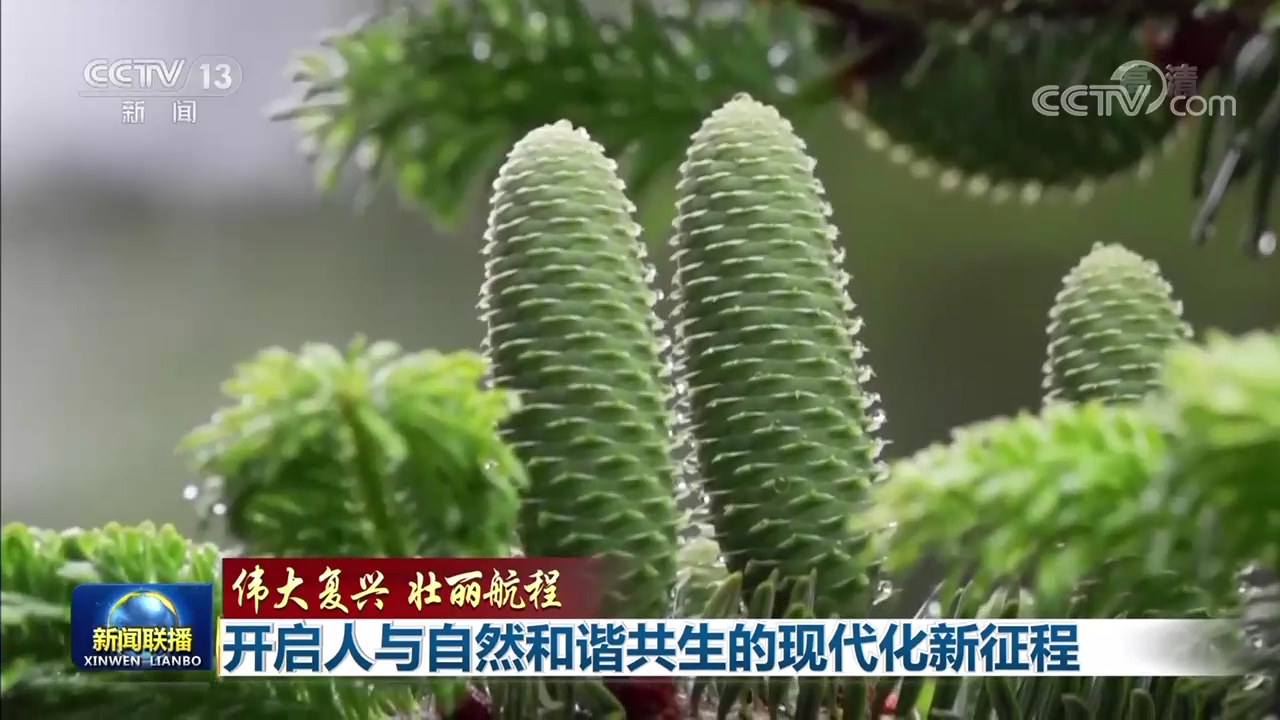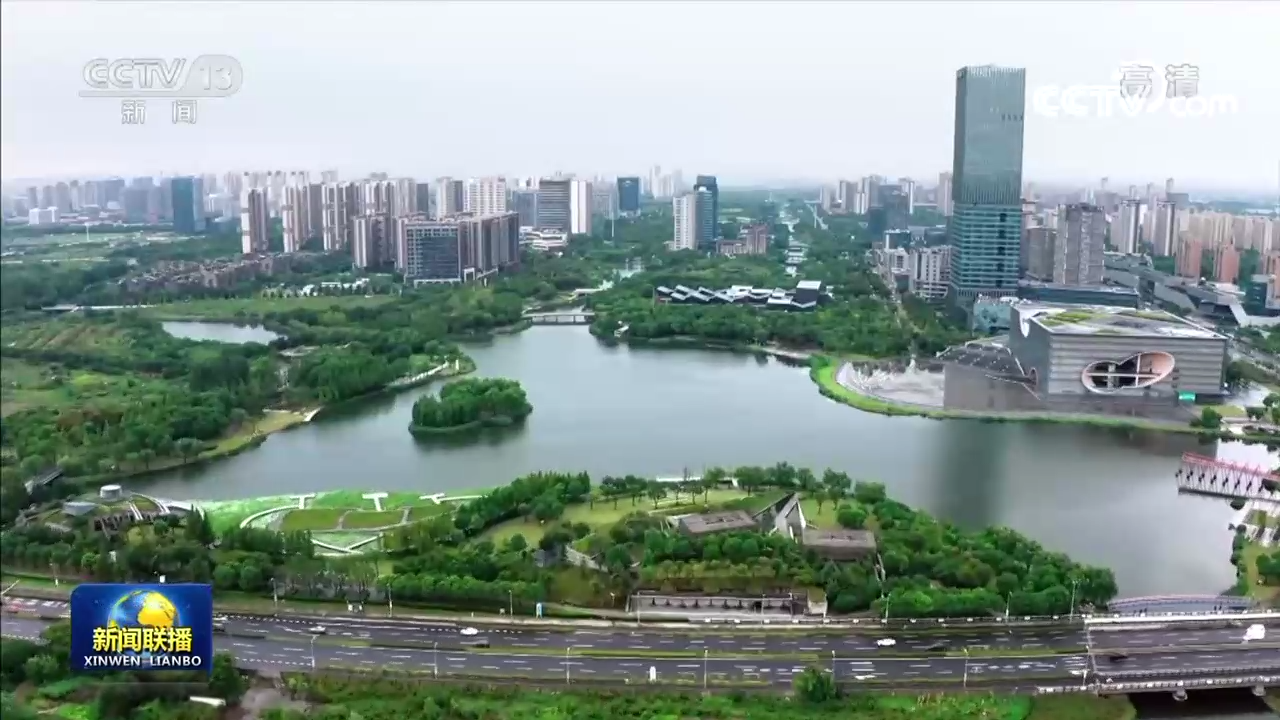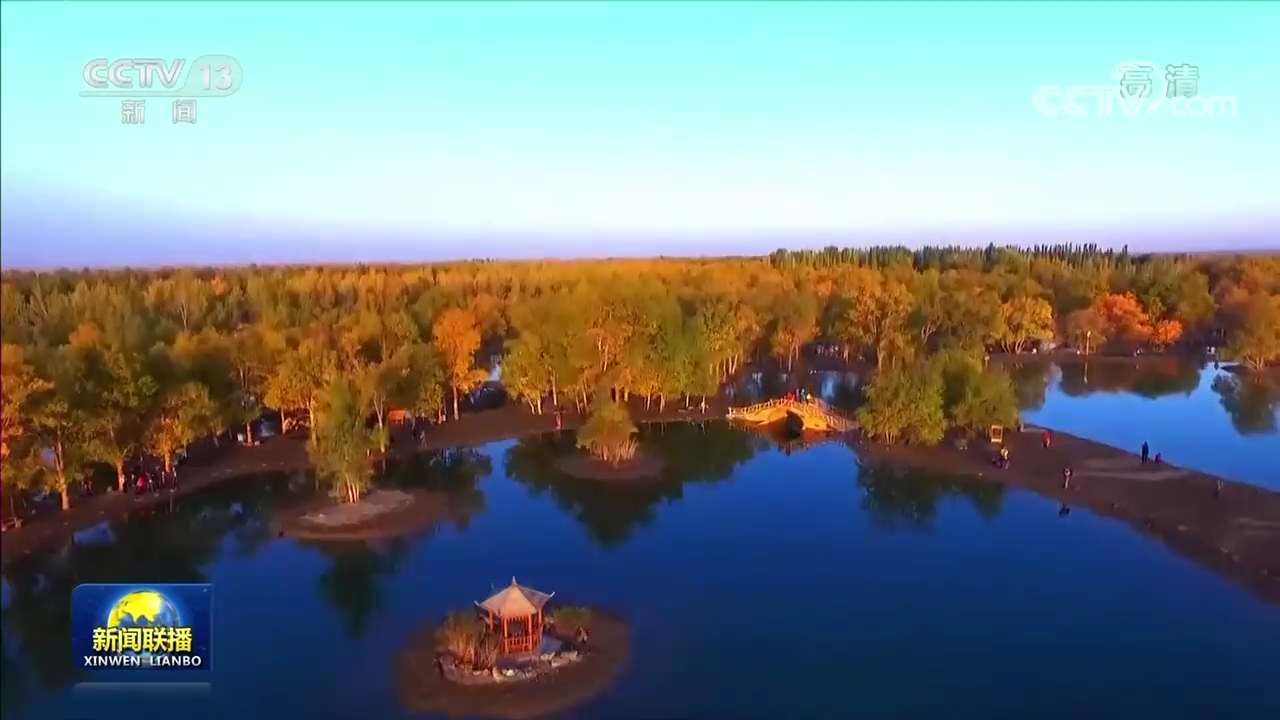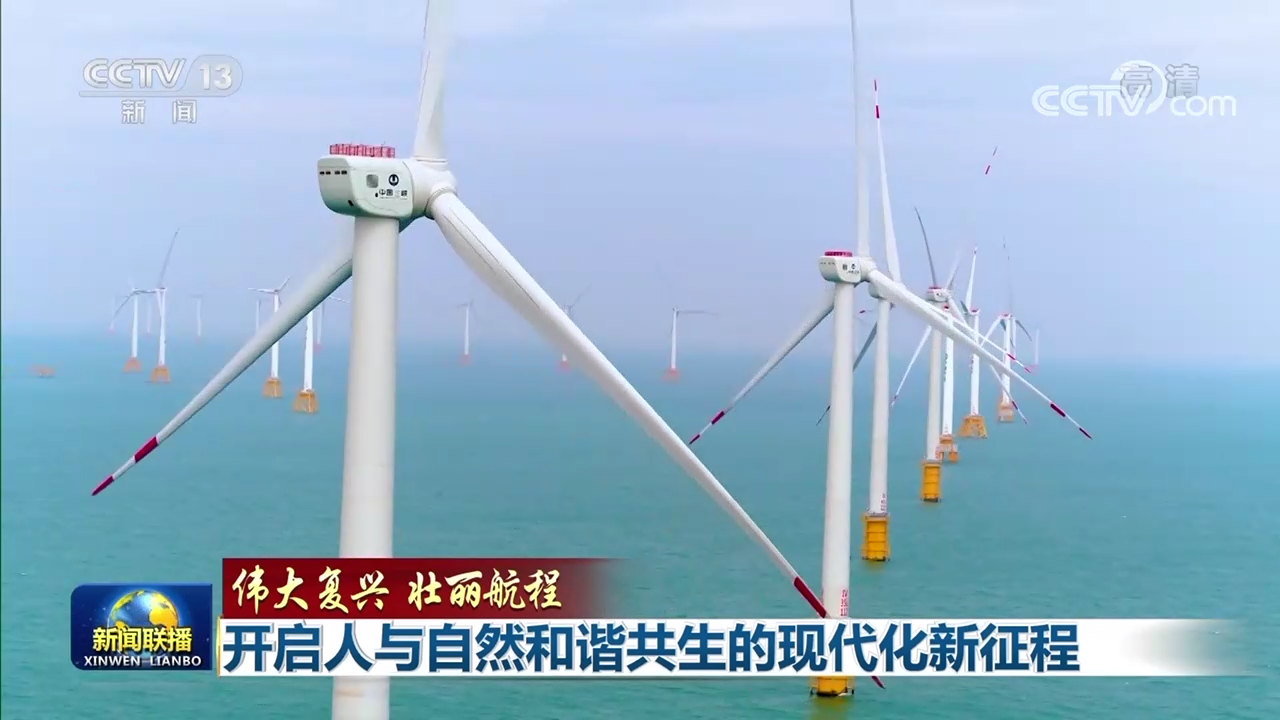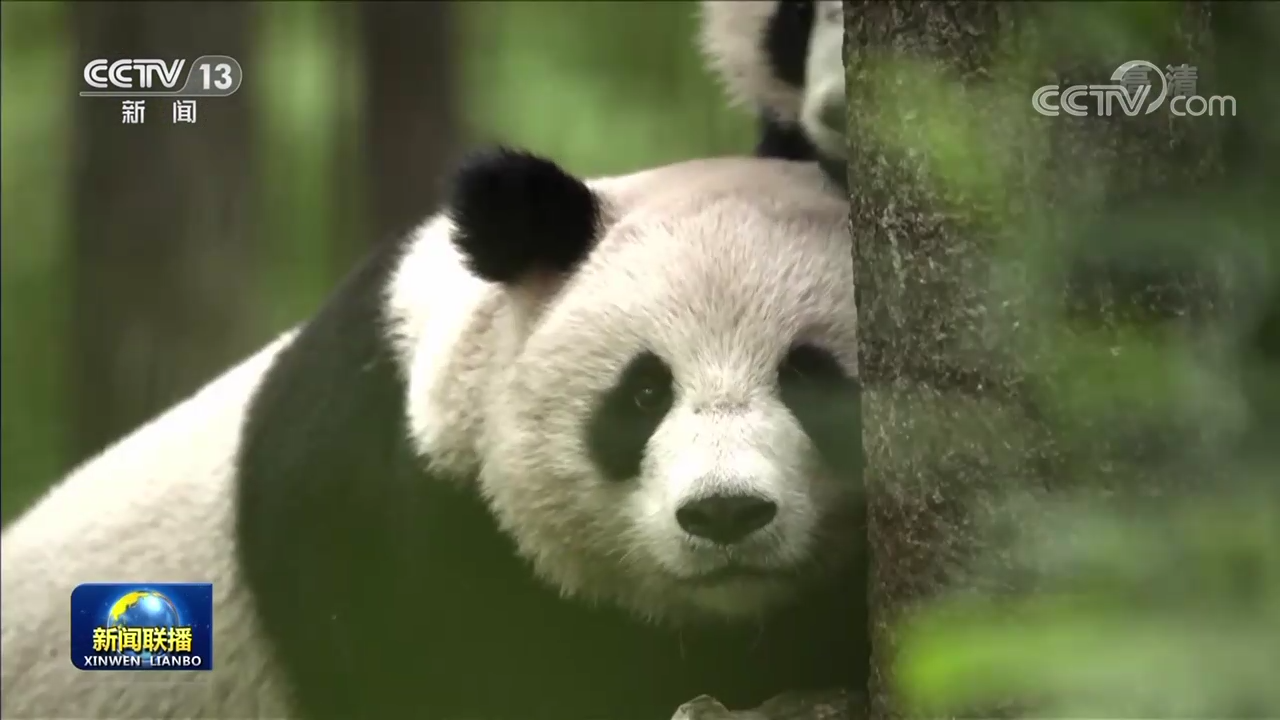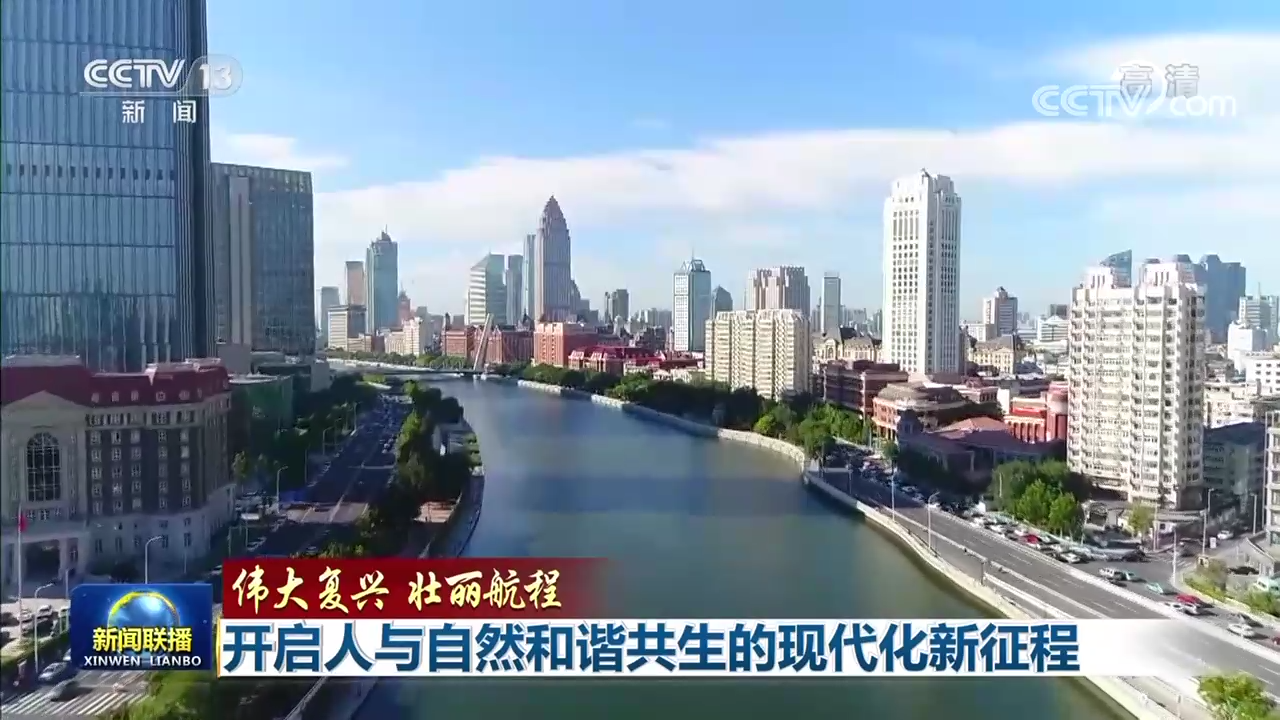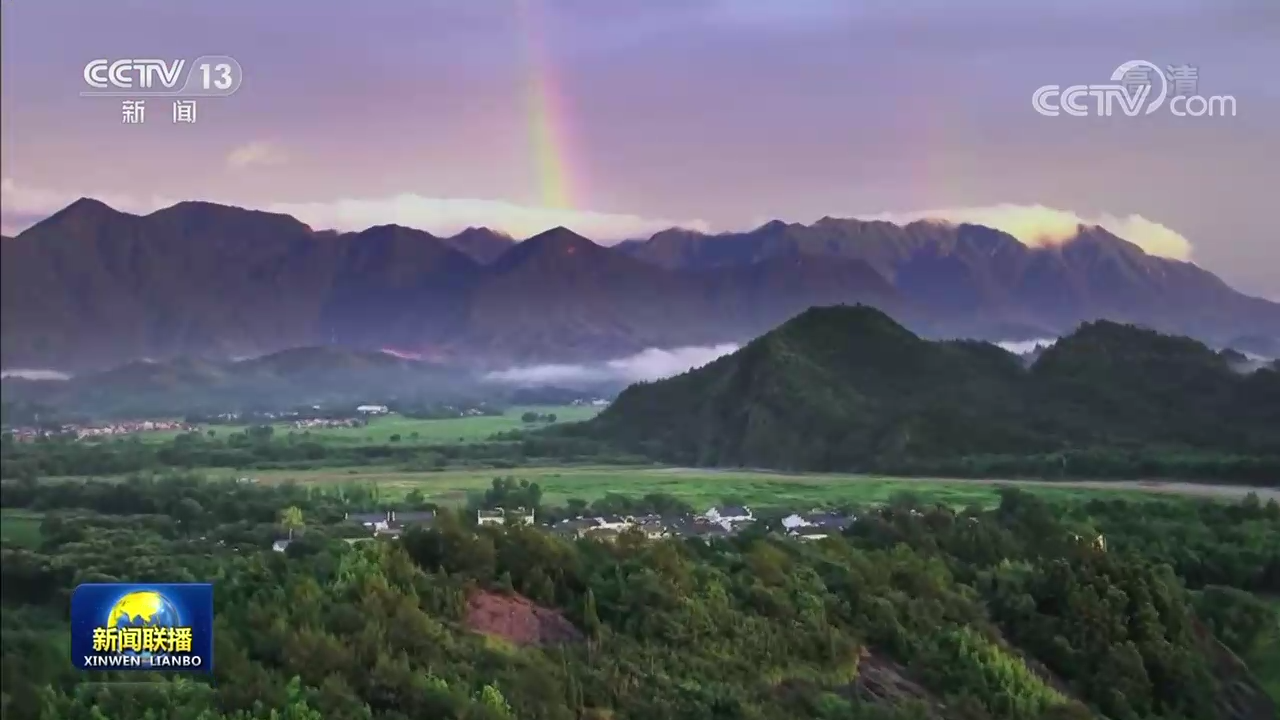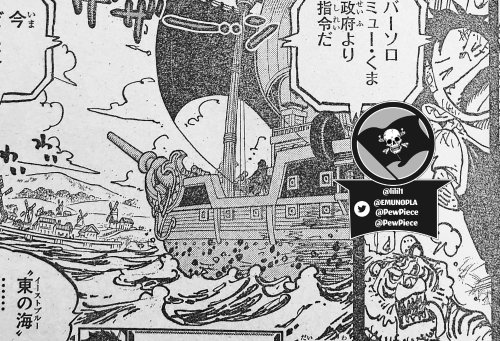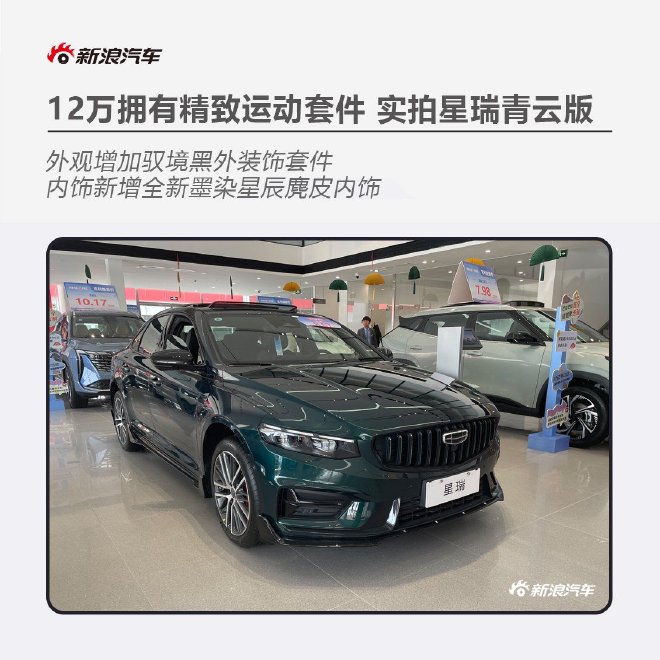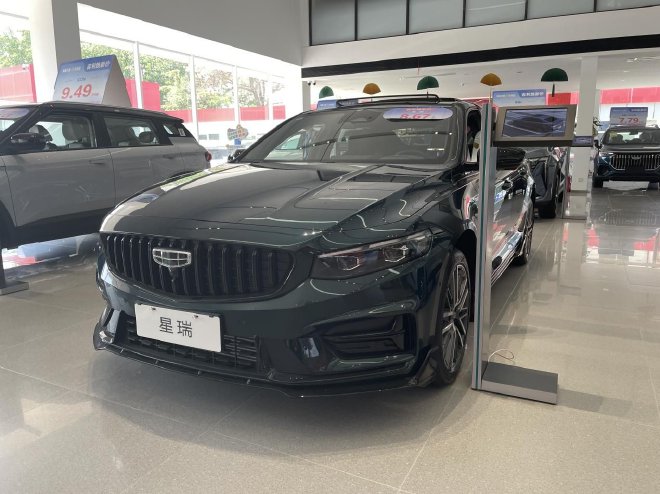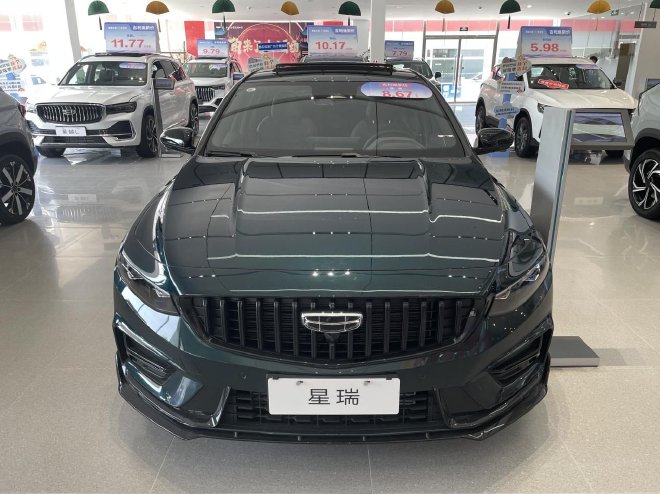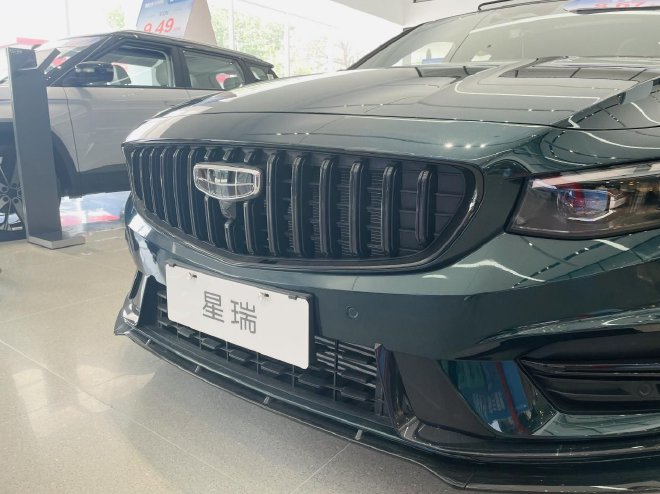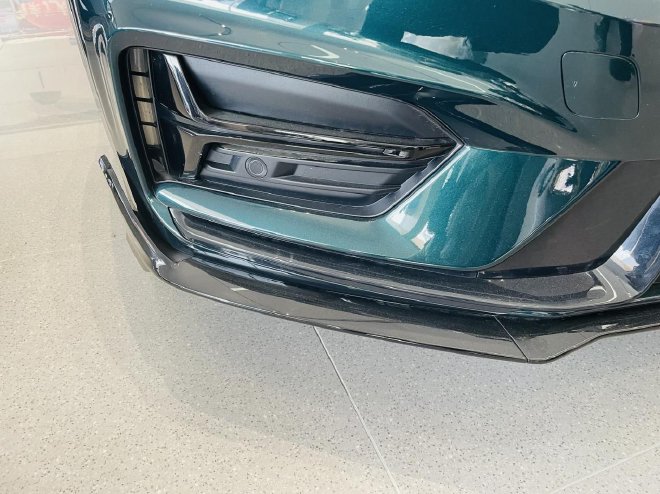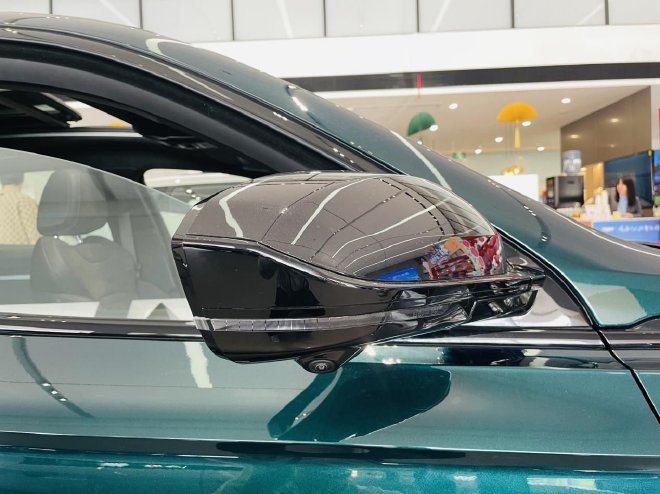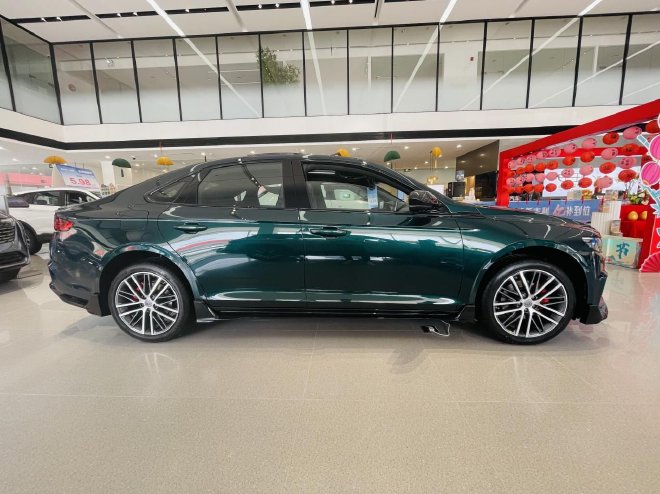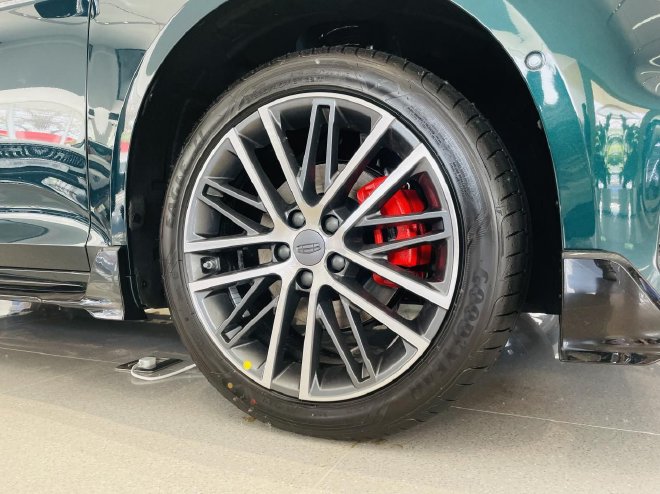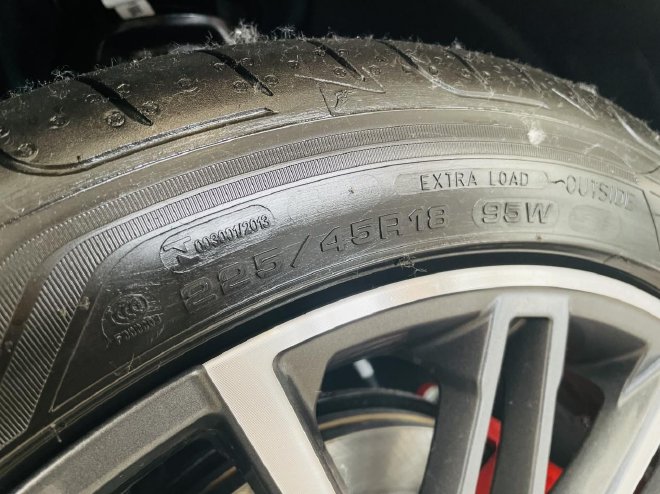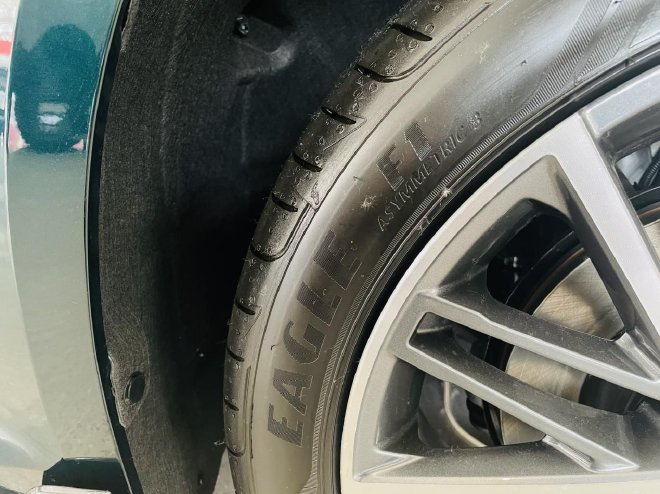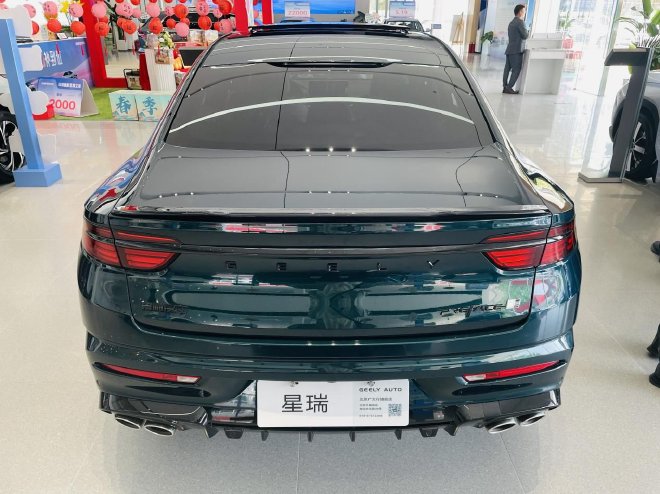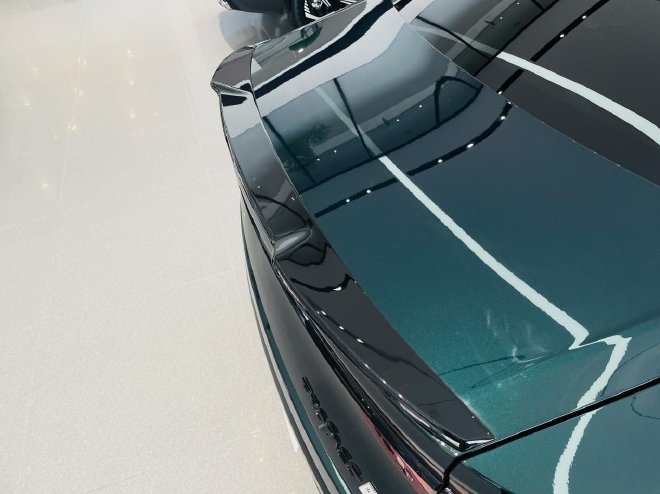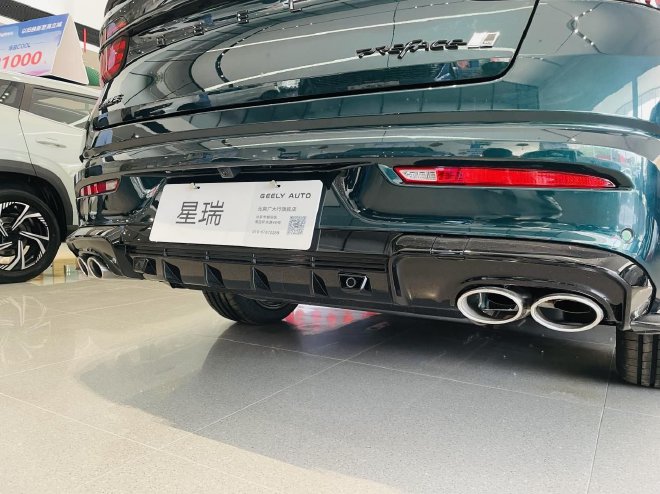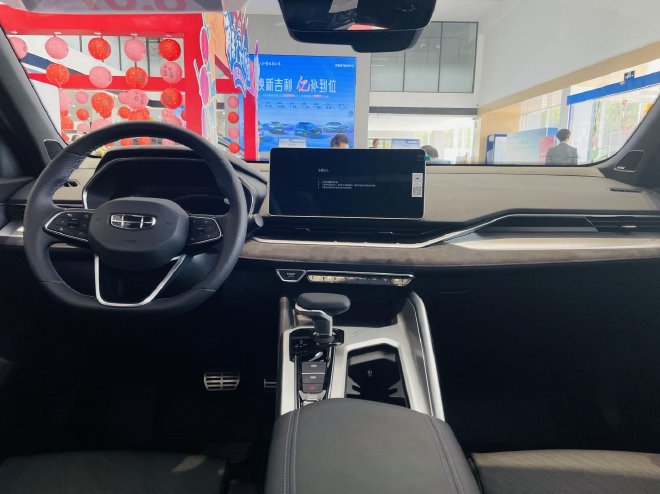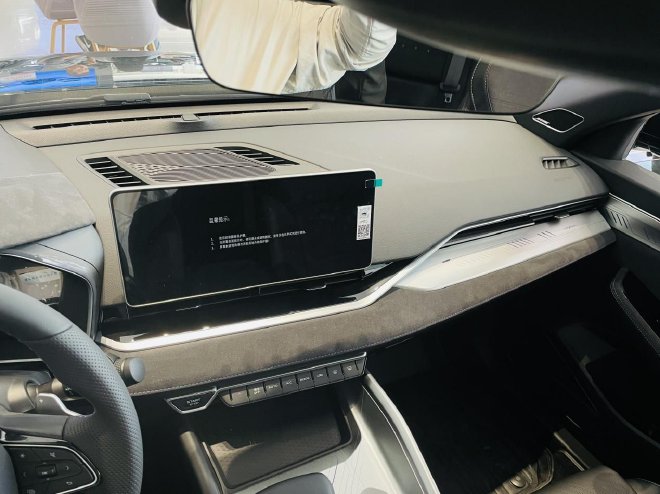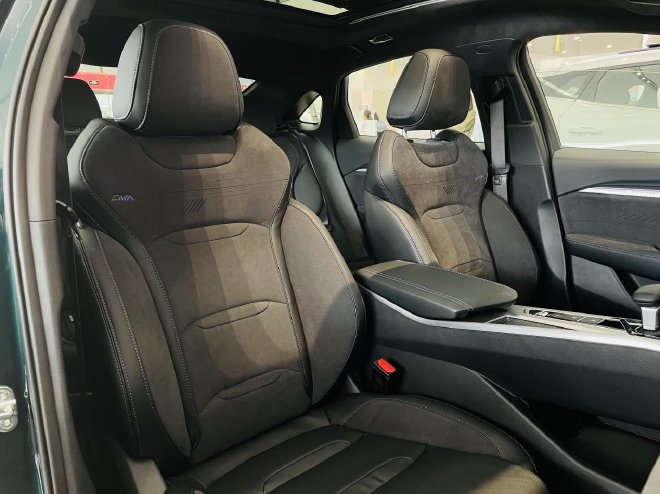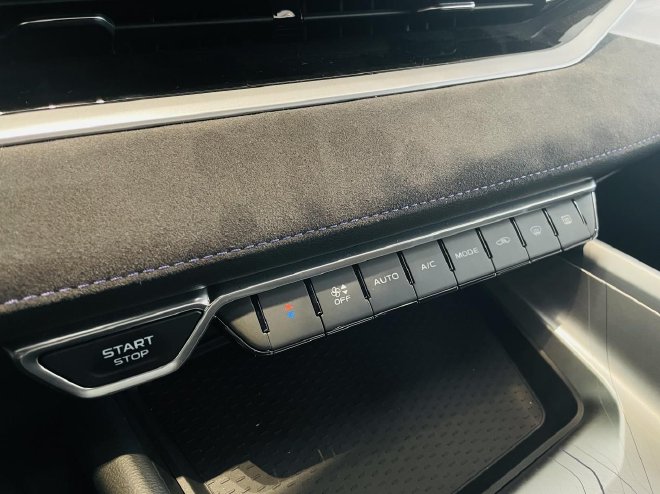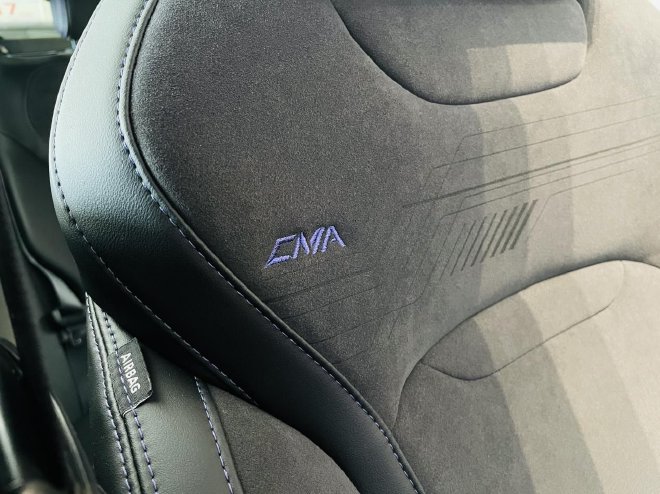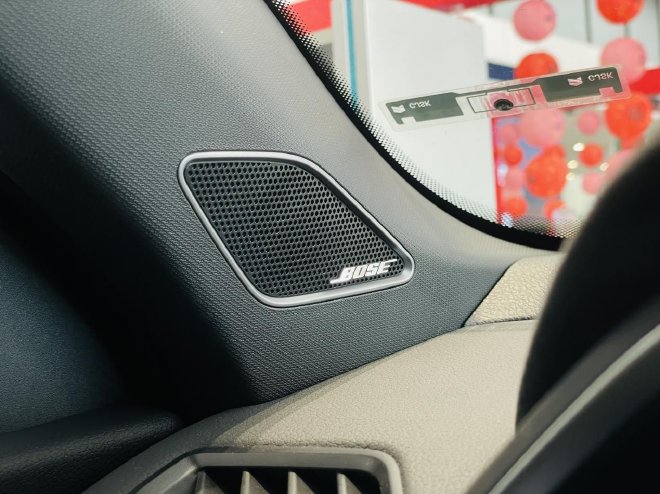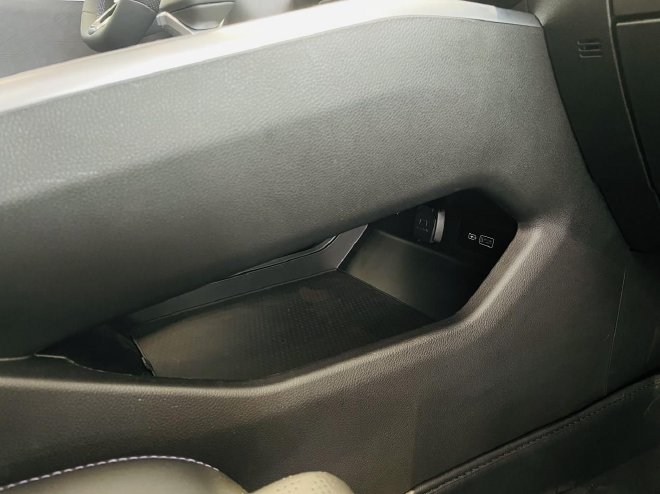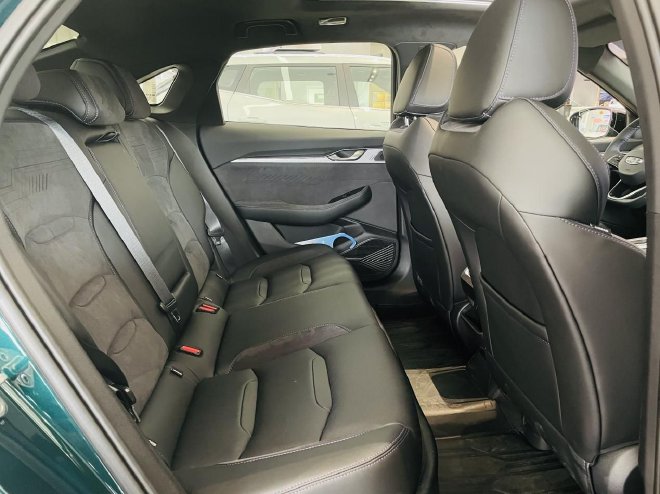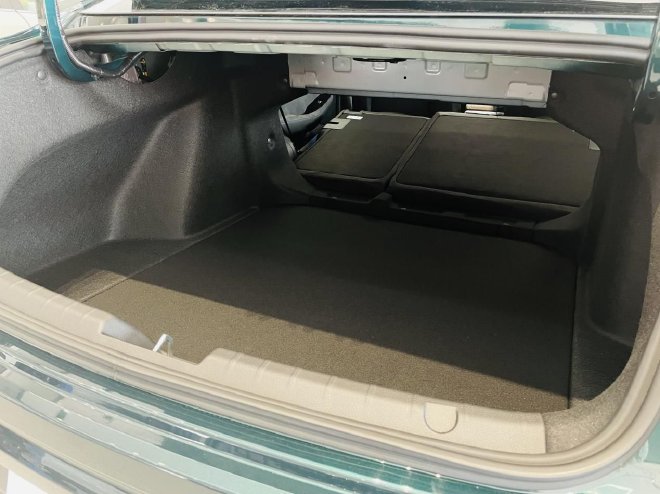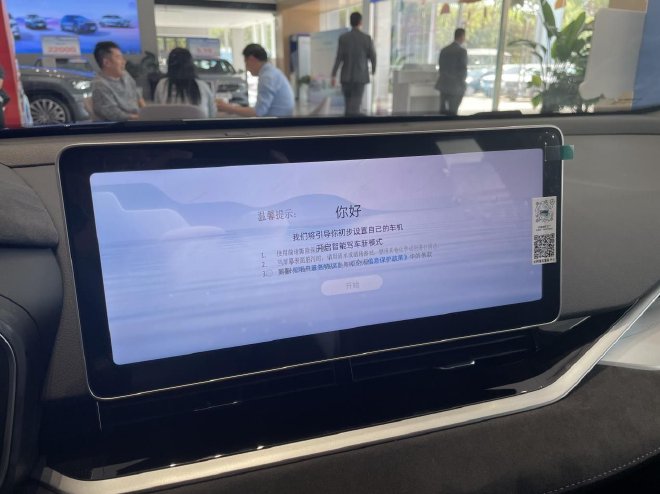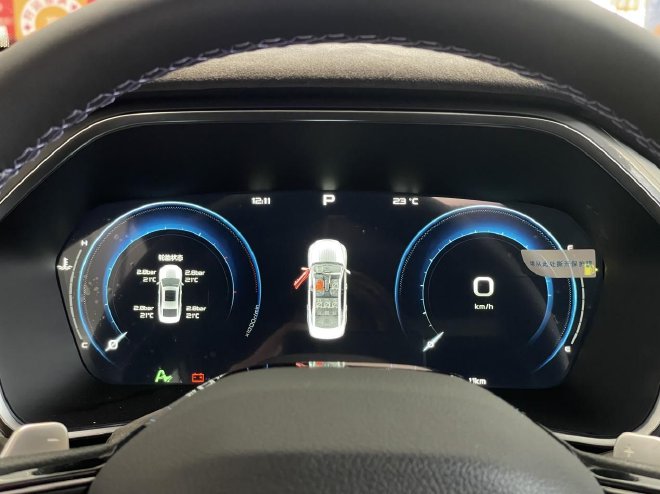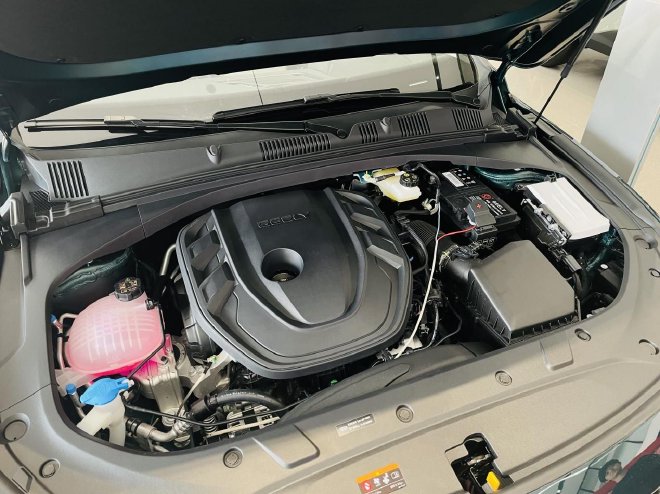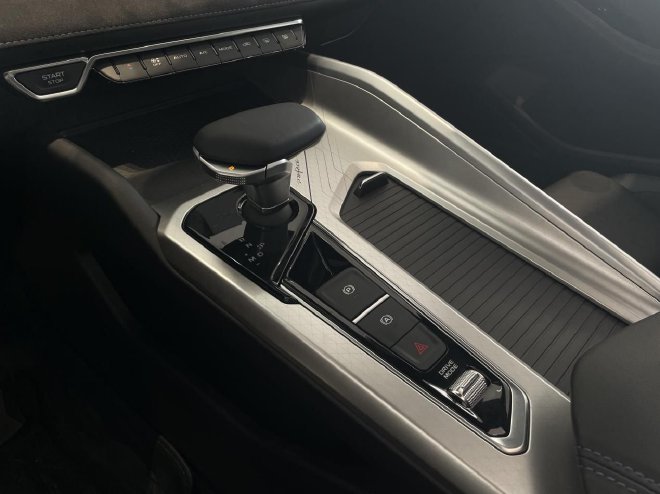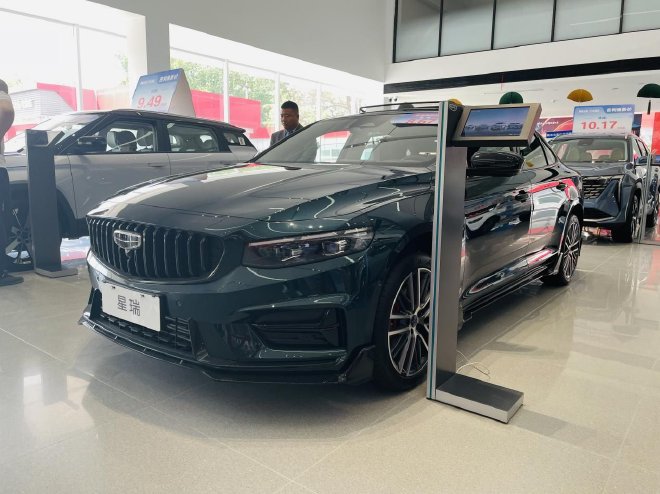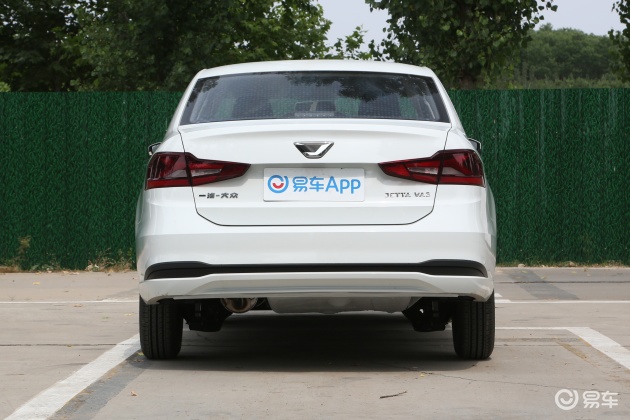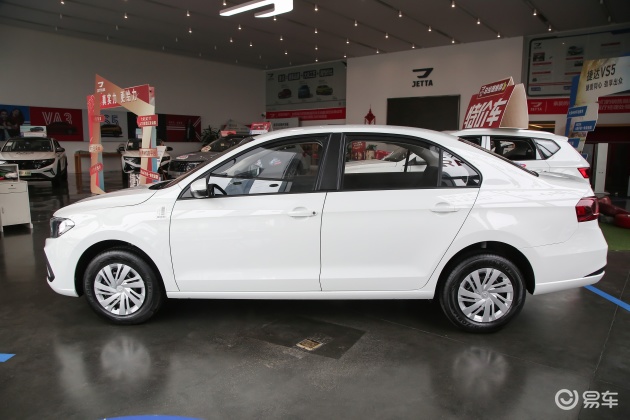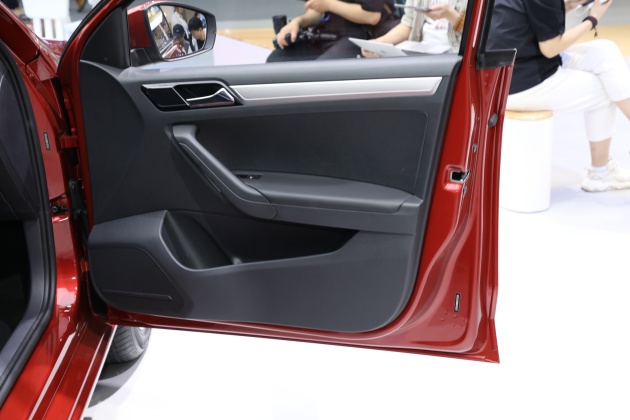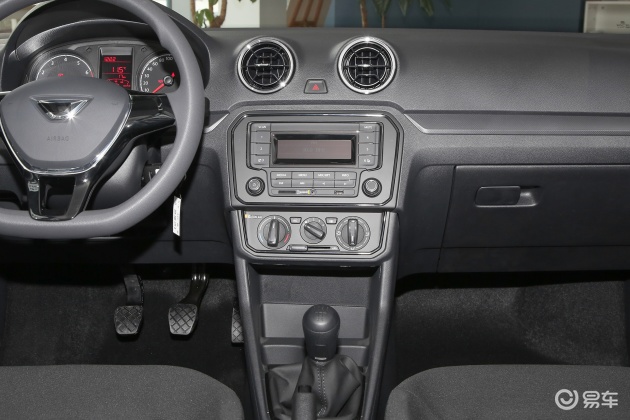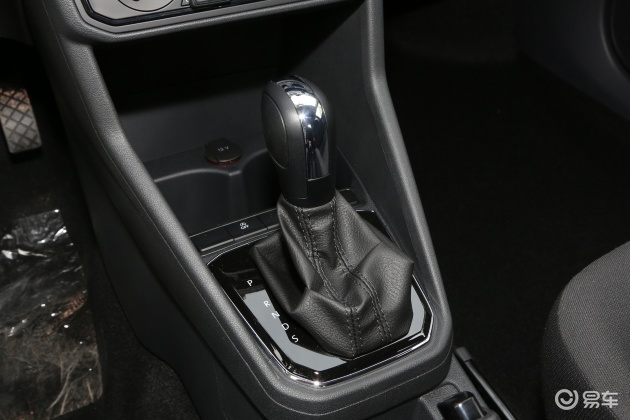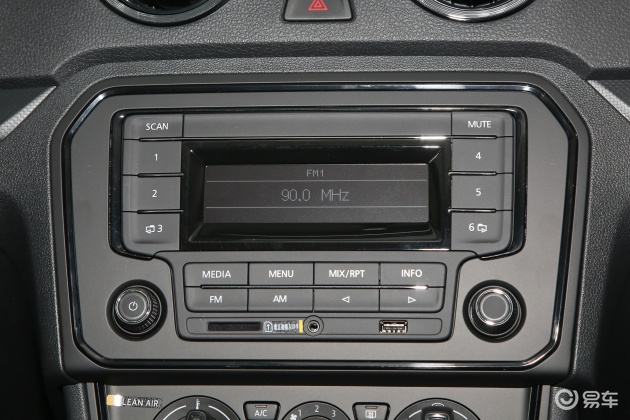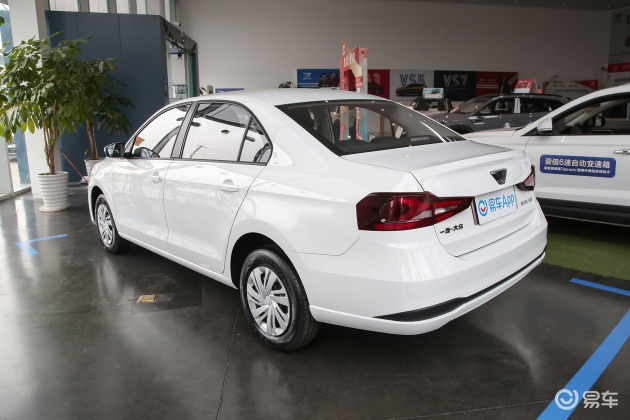Xinhua News Agency, Beijing, December 22-the State Council Press Office released a white paper entitled "Sustainable Development of Traffic in China" on December 22. The full text is as follows:
The Sustainable Development of Traffic in China
(December 2020)
People’s Republic of China (PRC)
the State Council Information Office
catalogue
foreword
First, take the road of traffic development in the new era
(A) to build people’s satisfaction with the traffic as the goal.
(B) to be a good development of "pioneers" as the positioning.
(3) Guided by the new development concept
(D) Reform and opening up as the driving force
(E) driven by innovation as the support.
Second, from a big transportation country to a strong transportation country.
(A) Infrastructure from "connecting into pieces" to "basically networking"
(B) Transport services from "good" to "good"
(C) traffic technology from "running with the main" to "running with and leading" in parallel.
Third, serve the decisive battle to get rid of poverty and win the overall well-off society
(1) Resolutely win the battle against poverty in transportation.
(B) "Four Good Rural Roads" to promote the high-quality development of traffic in poverty-stricken areas
(C) traffic to help the majority of farmers get rid of poverty and become well-off.
Fourth, promote the modernization of traffic management
(A) to promote the reform of traffic management system.
(2) Promote the green development of transportation.
(3) Strengthen the capacity building of safety prevention and control and emergency support.
V. Promoting the construction of a global community of transportation destiny
(1) Helping to build the "Belt and Road"
(2) Actively promote the reform of the global traffic governance system.
(3) Strengthening international exchanges and cooperation.
Sixth, the future prospect of China traffic.
Concluding remarks
foreword
Transportation is a basic, leading, strategic industry and an important service industry in the national economy, and it is an important support for sustainable development.
Since the founding of New China, especially since the reform and opening up, under the leadership of the Communist Party of China, China’s transportation has adhered to the concept of coordinated development with the economy and society and harmonious coexistence with the natural ecology, with the goal of building people’s satisfied transportation, self-reliance and hard work, and has achieved remarkable development achievements, fundamentally changed the face of weak foundation and overall backwardness, provided a strong guarantee for economic and social development, and embarked on a road of transportation development with China characteristics.
Since the 18th National Congress of the Communist Party of China, under the guidance of Socialism with Chinese characteristics Thought, the supreme leader in the new era, China’s transportation development has made historic achievements and changes, entered the golden age of infrastructure development, service level improvement and transformation development, and entered a new era of high-quality development. The scale of infrastructure network ranks among the top in the world, the transportation service support capability is constantly improved, the scientific and technological innovation capability is significantly enhanced, the modernization level of industry governance has greatly jumped, the people’s demand for high-quality travel has been better met, and China has accelerated its March into a transportation power.
The world today is experiencing a great change that has never happened in a hundred years. The future and destiny of all countries have never been so closely linked. Transportation is increasingly important for strengthening interconnection and promoting people’s hearts. As a responsible big country, China has earnestly implemented the UN Agenda for Sustainable Development in 2030, actively participated in global traffic governance, strengthened international exchanges and cooperation, and contributed China wisdom and China’s strength to promoting global sustainable development and building a community of human destiny.
In order to comprehensively introduce the achievements of China’s transportation development in the new era, share the concept and practice of China’s sustainable transportation development, and enhance the international community’s understanding and understanding, this white paper is hereby issued.
First, take the road of traffic development in the new era
China’s transportation actively adapts to the new situation, insists on high-quality development of internal services and high-level opening of external services, grasps the golden period of infrastructure development, service level improvement and transformation development, makes great efforts to promote the construction of comprehensive transportation, smart transportation, safe transportation and green transportation, and takes the road of transportation development in the new era.
(A) to build people’s satisfaction with the traffic as the goal.
Serving the people, relying on the people and serving the people is the initial intention and mission of China’s transportation development. In the new era, China’s transportation adheres to the development concept of people first and people first, insists on people’s co-construction, co-governance and sharing, and builds people’s satisfactory transportation.
— — People depend on the people for transportation. Adhere to the people’s dominant position, focus on solving the most concerned, direct and realistic traffic development problems, fully mobilize the people’s enthusiasm, initiative and creativity, encourage the public to participate in traffic management, and rely on the people to run traffic well.
— — People’s traffic is shared by the people. Coordinate fairness and efficiency, adhere to the direction of inclusiveness, basic protection, equalization and sustainability, vigorously promote the equalization of basic public services in urban and rural areas, ensure that urban and rural residents can take advantage of each other and let people share the fruits of transportation development.
— — People’s transportation satisfies the people. Taking people’s satisfaction as the fundamental criterion, we will focus on people’s new expectations for transportation in the new era, deepen structural reform on the supply side, promote high-quality development of transportation, continuously meet the transportation needs of different groups, and continuously improve people’s sense of acquisition, happiness and security.
(B) to be a good development of "pioneers" as the positioning.
The economy needs to develop, the country needs to be strong and the traffic needs to be strong first. Take transportation as the "pioneer" of economic and social development, adhere to the principle of leading first and moderately ahead, maintain a certain speed of development, and provide a solid foundation and strong guarantee for economic and social development.
— — Priority is given to deployment in measures. We will implement regional coordinated development strategies such as the coordinated development of Beijing-Tianjin-Hebei, the development of the Yangtze River Economic Belt, the integrated development of the Yangtze River Delta, and the construction of Guangdong-Hong Kong-Macao Greater Bay Area, promote major decision-making arrangements such as poverty alleviation, rural revitalization, and new urbanization, and give priority to transportation as the leading field.
— — Moderately ahead in ability. Adapt to the development requirements of new industrialization, informationization, urbanization and agricultural modernization, take accelerating the construction of comprehensive three-dimensional transportation network as the goal, take the preparation of comprehensive transportation planning as the starting point, moderately advance the layout of transportation infrastructure construction, support economic and social development, and leave enough room for future development.
— — Leading in function. Give full play to the leading role of transportation in land space development, industrial gradient transfer, urban layout optimization, and economic and trade exchanges, give full play to the leading role of new Internet formats in cultivating new kinetic energy for economic development, and promote the accelerated rise of new economic forms.
(3) Guided by the new development concept
Carrying out the new development concept of innovation, coordination, green, openness and sharing is the key to China’s traffic development in the new era. Lead the high-quality development of transportation with new development concepts, update concepts, change ways, solve problems and cultivate advantages.
— — Build a safe, convenient, efficient, green and economical modern comprehensive transportation system. We will build a high-quality rapid transportation network, a high-efficiency ordinary trunk network and a wide-coverage basic service network, and accelerate the formation of a three-dimensional interconnected comprehensive transportation network pattern and a comprehensive transportation backbone that traverses east and west, runs through north and south, and is smooth inside and outside.
— — Promote the structural reform of the supply side of transportation. Reduce the structural, institutional, technical, managerial and service costs of transportation, promote the logistics industry to "reduce costs and increase efficiency", and give full play to the basic and main role of transportation in the development of logistics industry.
— — Optimize the business environment. Strengthen the construction of a government ruled by law, rationally divide the financial powers and expenditure responsibilities of the central and local governments in the transportation field, promote decentralization, strengthen management, optimize services, improve and improve the new supervision mechanism based on credit, and enhance the internationalization, rule of law and marketization of the business environment.
— — Enhance development momentum. Encourage and standardize the development of new transportation formats, accelerate the transformation of old and new kinetic energy, establish a multi-level, selectable and diversified transportation service system, and improve the level of transportation services.
(D) Reform and opening up as the driving force
Deepening reform and opening wider to the outside world are powerful driving forces for the steady and far-reaching development of transportation. Adhere to the direction of socialist market economy reform, better combine "effective market" with "promising government", and further liberate and develop transportation productivity.
— — Adhere to market-oriented reform. Give full play to the decisive role of the market in resource allocation, give better play to the role of the government, liberalize the transportation market, promote quality change, efficiency change and power change, rely on the market to solve the problem of insufficient development, give better play to the role of the government to solve the problem of unbalanced development, constantly improve the transportation market system and release the vitality of transportation.
— — Adhere to a high level of openness. Open the door to construction, actively promote the "going out" and "please come in" of transportation, focus on serving and building the "Belt and Road", and strive to promote the "four-in-one" connectivity of land, sea, sky and internet and the "three-in-one" connectivity of policies, rules and standards, so as to improve the level of interconnection with other countries and the level of international transportation facilitation.
(E) driven by innovation as the support.
Innovation is the source of power for the development of transportation. Take innovation as the first driving force to promote development, take scientific and technological innovation as the traction, vigorously promote management innovation, system innovation and cultural innovation, improve the innovation system, optimize the innovation environment and strengthen talent support.
— — Iterative upgrading of infrastructure construction and maintenance technology will enhance the toughness of transportation system, enhance the ability of transportation infrastructure to resist disasters and early warning and monitoring, and improve the construction technology level of high-speed railways, expressways, extra-large bridges and tunnels, deep-water harbor construction, and large airport projects.
— — Promote the development of digital economy and shared economy industry with the construction of smart transportation, promote the joint innovation of modes, formats, products and services, improve the efficiency of comprehensive transportation network, and build a new transportation ecosystem.
— — With the development of digital, networked, intelligent and green technologies, we will expand the high-quality development space of transportation, seize the historical opportunity of the new round of global scientific and technological revolution and industrial transformation to give birth to new technologies, new models and new formats, and promote the sustainable development of transportation.
Second, from a big transportation country to a strong transportation country.
In the new era, China’s traffic has entered the fast lane of high-quality development, infrastructure construction is changing with each passing day, transportation service capacity, quality and efficiency are greatly improved, scientific and technological support is more powerful, people’s travel is more convenient, and cargo transportation is more efficient. China is moving from a big transportation country to a powerful transportation country.
(A) Infrastructure from "connecting into pieces" to "basically networking"
Firmly grasp the important opportunity period of optimizing the layout of transportation infrastructure and accelerating networking, deepen the structural reform of transportation supply side, put a large number of integrated passenger and freight hubs into operation, realize the leap in scale and quality of integrated transportation network, and continuously improve the coverage and access depth.
The comprehensive transportation infrastructure is basically networked. By the end of 2019, the national railway operating mileage reached 139,000 kilometers, of which the high-speed railway operating mileage exceeded 35,000 kilometers; The national highway mileage reached 5.013 million kilometers, including 150,000 kilometers of expressways; There are 23,000 productive wharf berths, including 2,520 berths of 10,000-ton class and above; The navigation mileage of inland waterway is 127,000 kilometers; Civil aviation has certified 238 transport airports; The total mileage of long-distance oil and gas pipelines nationwide has reached 156,000 kilometers, and the degree of interconnection has been significantly strengthened; The total length of postal route and express service network (one-way) is 40.859 million kilometers, realizing postal service in villages and towns. The initial formation of a comprehensive three-dimensional transportation network has strongly supported the sustained, rapid and healthy development of the economy and society.
![(Chart) [Authorized to issue] the white paper "Sustainable Development of Traffic in China" (Figure 1)](https://p1.img.cctvpic.com//photoworkspace/imageLocalized/2020/12/22/2020122217421526062.jpg)
The comprehensive transportation corridor is basically connected. Efforts will be made to strengthen the construction of a comprehensive transportation corridor, further open up the national transportation artery, effectively safeguard land and energy security, and strengthen regional political and economic ties. Accelerate the construction of "ten vertical and ten horizontal" comprehensive transportation corridors, relying on Beijing-Shanghai, Beijing-Guangzhou, coastal and riverside comprehensive transportation corridors, and the economic belts and urban agglomerations formed by ports such as the Yangtze River Delta, Pearl River Delta and Bohai Rim and ports along the Yangtze River will become the most dynamic and densely populated areas in China. Two-thirds of the cities in the Yangtze River Delta and about 80% of the total economic output are gathered along the expressway from Shanghai to Nanjing and from Shanghai to Hangzhou. Guangdong-Hong Kong-Macao Greater Bay Area has formed an intercity rapid transportation network with high-speed railway, intercity railway and high-grade highway as the main body. Natural gas pipeline systems such as West-East Gas Transmission, Sichuan-East Gas Transmission, Sea-gas Landing and Shaanxi-Beijing Line have been continuously improved. The layout of coal logistics channel is more reasonable, forming a large railway energy transportation channel running through the north and south and east and west; All the backbone channels of grain logistics have been opened, the proportion of bulk grain transportation and container transportation of finished grain has been greatly improved, and the efficiency of grain logistics has been steadily improved. Inter-regional personnel exchanges and material circulation are becoming more and more convenient, and a comprehensive traffic skeleton that runs across the east and west, runs through the north and south, and is smooth inside and open outside has gradually taken shape.
The pace of comprehensive transportation hub construction has been accelerated. We will further promote the deep integration of transportation, logistics, information, economy and society, vigorously develop the hub economy, and actively cultivate new kinetic energy for economic development. Combined with the layout of the national urban system, we will build international comprehensive transportation hubs such as Beijing, Shanghai and Guangzhou, and accelerate the construction of national and regional comprehensive transportation hubs. Through planning and guidance, the construction of integrated comprehensive passenger hub stations was strengthened, and a number of comprehensive transportation hubs such as Daxing in Beijing and Hongqiao in Shanghai were built, realizing the seamless connection of high-speed rail, urban passenger transport, rail transit and civil aviation. Optimize the layout of freight hubs, promote the construction of multimodal transport and trunk-branch connection freight hubs (logistics parks), and build a number of modern logistics hubs such as Shanghai Yangshan Port and Zhengzhou Railway Port, which have improved the level of reloading, accelerated the development of multimodal transport, and effectively promoted the construction of an integrated transportation system. Different modes of transportation are organically connected through the hub, which provides a strong support for optimizing the spatial layout of the national economy and building a modern economic system.
![(Chart) [Authorized to publish] White Paper on Sustainable Development of China Transportation (Column 1)](https://p5.img.cctvpic.com//photoworkspace/imageLocalized/2020/12/22/2020122217421516811.jpg)
The systematic construction of urban transportation infrastructure has been steadily advanced. By the end of 2019, the total length of urban roads in China was 459,000 kilometers, and the per capita road area was 17.36 square meters. The road network density in the built-up area reached 6.65 kilometers per square kilometer, and the road area ratio reached 13.19%. Strengthen the planning and guidance of urban comprehensive transportation system and strengthen the effective connection between internal transportation and external transportation. Establish the urban road layout concept of "narrow road and dense road network" and build an urban road network with reasonable gradation of expressway, main road and secondary branch road, which is suitable for green travel. Improve the distribution of road space, fully guarantee the demand for green transportation, and standardize the setting of road traffic safety facilities and traffic management facilities. Carry out special actions to purify sidewalks, promote the construction of bicycle lanes, and effectively improve the green travel environment.
(B) Transport services from "good" to "good"
Improve the quality of transportation services in an all-round way. New modes such as "internet plus Transportation" have developed rapidly, and the level of diversification, quality and equalization has been greatly improved. Transportation services have achieved "people can move easily and goods can flow smoothly", and their accessibility and supportability have been significantly enhanced. The support of transportation for the country’s economic and social development has been significantly enhanced, and the role of promoting investment, consumption and steady growth has been obvious.
The ability of cargo transportation service support has been continuously improved. China is the busiest country in the world. Facing the increasing demand for freight transportation, we should speed up the development of multimodal transport, innovate efficient transport organization modes such as public rail transport, air rail transport, iron-water transport, river-sea transport, water-water transfer and ro-ro transport, and carry out special actions such as improving railway transport capacity, upgrading water transport system and road freight management. The freight transport structure has been continuously optimized, the comprehensive transport efficiency has been continuously improved, the logistics cost has been gradually reduced, the environmental pollution of transportation has been significantly reduced, and the construction of crude oil, refined oil and natural gas pipelines has been continuously accelerated. The proportion of railway transportation volume to the total social transportation volume has been continuously improved, and the action of "revolving iron" has achieved outstanding results. Port cargo throughput and container throughput rank first in the world. Express delivery business maintained a strong growth trend, ranking first in the world for six consecutive years. The transportation service capacity has been greatly improved, and positive results have been achieved in promoting logistics cost reduction and efficiency improvement, which has promoted the transformation and upgrading of the logistics industry.
![(Chart) [Authorized to issue] the white paper "Sustainable Development of Traffic in China" (Figure 2)](https://p5.img.cctvpic.com//photoworkspace/imageLocalized/2020/12/22/2020122217421570241.jpg)
![(Chart) [Authorized to publish] White Paper on Sustainable Development of China Transportation (Box 2)](https://p2.img.cctvpic.com//photoworkspace/imageLocalized/2020/12/22/2020122217421581725.jpg)
The public’s demand for high-quality travel is gradually met. The professional and personalized service quality of passenger transportation has been continuously improved, people’s demand for "beautiful travel" has been better met, and the travel experience has become more convenient, fast, comfortable and warm. Based on road transportation, the travel service system with high-speed rail and civil aviation as the main development directions is more perfect, the passenger transport structure is continuously optimized, and the medium and long-distance passenger flow gradually shifts from highway to high-speed rail and civil aviation. By the end of 2019, EMU trains had sent 12 billion passengers, accounting for 65.4% of the total number of railway passengers sent, up from 4.5% in 2007. The service guarantee ability of large-scale passenger flow on important festivals such as Spring Festival and National Day has been significantly improved. People can not only "walk away", but also walk "comfortably, elegantly and comfortably", and the expectation that "everyone enjoys his trip" has gradually become a reality.
![(Chart) [Authorized to issue] the white paper "Sustainable Development of Traffic in China" (Figure 3).](https://p4.img.cctvpic.com//photoworkspace/imageLocalized/2020/12/22/2020122217421555548.jpg)
Urban public transport continues to give priority to development. Developing public transport is the development direction of modern cities and an effective measure to strengthen urban traffic management and improve the quality of life of urban residents. Vigorously strengthen the construction of urban rail transit. By the end of 2019, a total of 40 cities across the country had opened and operated urban rail transit lines, with an operating mileage of 6,172.2 kilometers. The backbone role of urban rail transit has become increasingly prominent, the sharing rate of urban bus trips has steadily increased, and the comfort has been continuously improved. The urban slow traffic system has developed rapidly. More than 70 cities have issued detailed rules for the implementation of bike-sharing management, and more than 360 cities have provided bike-sharing services. The development of urban public transport provides convenience for people to travel and meets the diversified travel needs.
![(Chart) [Authorized to issue] the white paper "Sustainable Development of Traffic in China" (Figure 4).](https://p1.img.cctvpic.com//photoworkspace/imageLocalized/2020/12/22/2020122217421521687.jpg)
![(Chart) [Authorized to issue] White Paper on Sustainable Development of China Transportation (Column 3)](https://p3.img.cctvpic.com//photoworkspace/imageLocalized/2020/12/22/2020122217421588620.jpg)
The level of equalization of basic public services has been continuously improved. Efforts should be made to ensure the public’s fair right to enjoy transportation services and promote social harmony with traffic harmony. The public welfare "slow train" in remote areas, with stops, low fares and public transportation, has built a bridge between mountain villages and cities and become a "bus" and a "rich car" for people along the line. The popularization of road passenger transport and the development of rural logistics have effectively promoted the integration of urban and rural areas. By the end of 2019, 52 demonstration counties of urban and rural transportation integration have been built, and the proportion of districts and counties with the development level of urban and rural transportation integration above AAA and AAAA in China has exceeded 95% and 79% respectively. Barrier-free facilities have been set up in important hubs such as railways, highways, water transport, civil aviation and postal services, and barrier-free means of transportation have been promoted, providing thoughtful travel services for special groups. Constantly increase the general benefits of passenger transportation and travel services, so that people can share the fruits of traffic development.
![(Chart) [Authorized to publish] White Paper on Sustainable Development of China Transportation (Column 4)](https://p1.img.cctvpic.com//photoworkspace/imageLocalized/2020/12/22/2020122217421563915.jpg)
New modes and formats of transportation are constantly emerging. "internet plus" transportation is profoundly changing the way people travel. By the end of 2019, the network car covered more than 400 cities across the country, and the average daily usage of the platform reached 20 million. Bike-sharing has effectively solved the "last mile" problem, with an average daily usage of about 45.7 million people. The integration of freight logistics into "internet plus" accelerated, which promoted the innovation of freight logistics organization. The 95306 railway freight service system was fully completed. In 2019, the proportion of railway online freight business reached 85%, and 229 car-free carrier pilot enterprises integrated 2.11 million freight vehicles. The vehicle utilization rate increased by about 50.0%, which was 6 to 8 percentage points lower than the traditional freight transaction cost. The dual-network integration of "high-speed rail network+Internet" has achieved outstanding results. In 2019, the 12306 Internet ticketing system sold more than 3.57 billion tickets; E-tickets basically achieve full coverage; High-speed railway station Auto is gradually realizing full coverage of WIFI signals, and innovatively launching online ordering, wireless charging, intelligent interaction and other services. By the end of 2019, more than 98% of bus passenger stations above the second level provided provincial online ticketing services. Online and offline new consumption patterns such as car-sharing, bike-sharing, shared car, etc., brush your face and enter the station, "paperless"New formats such as boarding, drone delivery, contactless distribution, smart parking, and customized road passenger service have brought convenience to people and injected new momentum into economic development.
Support the implementation of major regional strategies. Serve the coordinated development strategies of Beijing-Tianjin-Hebei, Yangtze River Economic Belt and Guangdong-Hong Kong-Macao Greater Bay Area, strengthen the transportation layout and provide basic support. Accelerate the construction of a multi-node and grid-like world-class urban agglomeration transportation system with the capital as the core, and accelerate the construction of a first-class comprehensive transportation system in xiong’an new area. Strengthen the efficient connection of trunk railways, intercity railways, regional (suburban) railways and urban rail transit, promote the "integration of four networks" and strive to create "Beijing-Tianjin-Hebei on the track". We will comprehensively promote the systematic management of trunk waterways, enhance the function of the golden waterway of the Yangtze River, ease the "bottleneck" constraint of the Three Gorges transportation, and build a comprehensive three-dimensional traffic corridor in the Yangtze River Economic Belt. Open Greater Bay Area via Guangdong, East and West to comprehensive transportation corridor in neighboring provinces, build an international land channel connecting the Pan-Pearl River Delta region and ASEAN countries, and promote the construction of a modern comprehensive transportation system in Guangdong-Hong Kong-Macao Greater Bay Area. Focusing on the "Haicheng-Wenwen (Haikou, Chengmai and Wenchang)" integrated economic circle and the Sanya tourism economic circle, we will build a multi-node, grid-like and full-coverage railway, intercity rail and skeleton highway network to fully support the construction of Hainan Free Trade Port. Taking Shanghai, Nanjing, Hangzhou, Hefei, Suzhou, Wuxi, Changzhou and Ningbo as nodes, we will build a multi-level comprehensive transportation network with efficient external connectivity and organic internal connection, and promote the higher-quality integrated development of transportation in the Yangtze River Delta region.It is in line with the ecological protection and land space development of the whole basin, and accelerates the formation of the "channel+hub+network" linkage development pattern of the Yellow River Basin. Differentiate and improve the transportation network of various regional plates, and enhance the transportation support for regional strategy.
(C) traffic technology from "running with the main" to "running with and leading" in parallel.
Through unremitting efforts, the scientific and technological innovation capability of transportation has greatly jumped, the core technologies have gradually become self-controllable, infrastructure and transportation equipment have achieved landmark major scientific and technological innovations, and the sustainable development capability has been significantly improved. China’s transportation technology has changed from following the world-class level to following, running side by side and leading in parallel.
The traffic super project attracts worldwide attention. The technology of high-speed railway, alpine railway, plateau railway and heavy-haul railway has reached the world leading level, and the construction technology of special geological roads such as plateau frozen soil, expansive soil and desert has overcome world-class problems. The key technologies of offshore deep-water port construction, giant estuary waterway regulation technology, long reach waterway system regulation technology and large airport engineering construction technology are leading the world. The Beijing-Guangzhou high-speed railway with the longest single operating mileage in the world runs through the whole line, and the Lanxin high-speed railway with the longest mileage has been built at one time. The Harbin-Dalian high-speed railway, the world’s first high-altitude high-speed railway in the alpine region, has the largest annual traffic volume in the world, and the No.1 tunnel in Xueshan, Golog Tibetan Autonomous Prefecture, Qinghai Province, with the highest altitude in the world has been opened to traffic. Sichuan-tibet railway Ya ‘an-Linzhi section started construction. A series of major projects such as Hong Kong-Zhuhai-Macao Bridge, Xicheng High-speed Railway Qinling Tunnel Group, Yangshan Port Container Terminal, Qingdao Port Fully Automated Container Terminal and Yangtze River Estuary Deepwater Channel Regulation have attracted worldwide attention. The total scale of highway bridges and tunnels under construction and in service in China ranks first in the world. There are seven cable-stayed bridges, six suspension bridges and six sea-crossing bridges in China, and eight of the top 10 bridges in the world are in China.
![(Chart) [Authorized to issue] White Paper on the Sustainable Development of Traffic in China (Box 5)](https://p1.img.cctvpic.com//photoworkspace/imageLocalized/2020/12/22/2020122217421566100.jpg)
Major breakthroughs have been made in transportation equipment technology. Aiming at the forefront of world science and technology to develop the "heavy weapon of the country", the level of independent research and development of key transportation equipment technology has been greatly improved. The "Fuxing" Chinese standard EMU with completely independent intellectual property rights realized the world’s first 420-kilometer-per-hour rendezvous and reconnection operation, and realized the world’s highest speed of 350 kilometers per hour continuous commercial operation in Beijing-Shanghai high-speed railway, Beijing-Tianjin intercity railway and Beijing-Zhangjiakou high-speed railway. The intelligent EMU realized the automatic driving function of 350 kilometers per hour for the first time; A high-speed maglev test prototype with a speed of 600 km/h and a high-speed EMU with a speed of 400 km/h and variable gauge with cross-border interconnection capability are off the assembly line. Great breakthroughs have been made in the research and development of special construction machinery such as shield machines, and the largest diameter earth pressure balance shield machine, the largest diameter hard rock shield machine and the largest diameter mud-water balance shield machine have been successfully developed. Energy-saving and new energy automobile industry is booming, keeping pace with the international advanced level. The manufacturing technology of marine machinery, special ships and large-scale automatic specialized containers is leading the world, and innovative breakthroughs have been made in 300-meter saturated diving. C919 large passenger plane successfully made its first flight. Regional aircraft ARJ21 started commercial operation. Rapid development of express sorting technology. Ocean-going ships, high-speed EMUs, high-power railway locomotives and offshore machinery lead the world, and equipment technologies such as large aircraft and a new generation of smart network cars are in the ascendant, which have become the "golden business cards" for China’s manufacturing industry to go global.
![(Chart) [Authorized to issue] White Paper on the Sustainable Development of Traffic in China (Box 6)](https://p2.img.cctvpic.com//photoworkspace/imageLocalized/2020/12/22/2020122217421551124.jpg)
The pace of development of intelligent transportation has accelerated. Promote the development of "internet plus" transportation, promote the comprehensive integration of modern information technology with transportation management and services, and improve the level of transportation services. Make full use of emerging technologies such as 5G communication, big data and artificial intelligence, and make continuous breakthroughs in intelligence in transportation infrastructure and equipment. Railway, highway, water transport, civil aviation passenger e-tickets and online ticket sales have become increasingly popular, and the informationization level of transportation production scheduling and command has improved significantly. By the end of 2019, 229 airports and major airlines have achieved "paperless" travel. The provincial toll stations of national expressways have been completely abolished, and the application of new technologies such as electronic toll collection system (ETC) of expressways has achieved remarkable results. By the end of 2019, the total number of ETC customers nationwide has exceeded 200 million, and the ability of full-road, full-time, all-weather monitoring and information dissemination has been continuously enhanced. Beidou system is widely used in all fields of transportation. There are 7.6 million road operating vehicles, 33,300 postal express trunk vehicles, 1,369 official ships, 10,863 water navigation AIDS, 109 coastal ground-based augmentation stations and 352 general-purpose aircraft, and Beidou system is applied to three transport aircraft. Beijing-Zhangjiakou high-speed railway has become the first intelligent high-speed railway in the world with Beidou satellite navigation system and automatic driving functions. The application of smart roads is gradually deepening, and technologies such as smart ports and smart shipping are widely used. Intelligent delivery facilities are spread all over major cities in China.Automatic sorting covers the backbone distribution centers of major express delivery enterprises. We will issue management specifications for self-driving road testing and guidelines for the construction of closed test sites, issue specifications for smart ships, establish offshore test sites for unmanned ships, and promote the demonstration application of drones in areas such as express delivery.
![(Chart) [Authorized to publish] White Paper on Sustainable Development of China Transportation (Column 7)](https://p3.img.cctvpic.com//photoworkspace/imageLocalized/2020/12/22/2020122217421575298.jpg)
Third, serve the decisive battle to get rid of poverty and win the overall well-off society
The key to a well-off society in an all-round way lies in the countryside; To run a well-off society in rural areas, traffic should go first. China regards traffic poverty alleviation as an important support for building a well-off society in an all-round way, promoting the modernization of agriculture and rural areas, and sharing the fruits of reform and development with the people, and makes every effort to eliminate the traffic bottleneck that restricts rural development, thus providing a solid guarantee for the broad masses of farmers to get rid of poverty and become rich.
(1) Resolutely win the battle against poverty in transportation.
Take poverty alleviation as an important mission of transportation development in the new era, improve the poverty alleviation planning policy system, innovate the poverty alleviation work mode, and achieve "priority arrangement of poverty alleviation projects, priority guarantee of poverty alleviation funds, priority docking of poverty alleviation work, and priority implementation of poverty alleviation measures", with extraordinary measures and efforts to help win the battle against poverty.
Strengthen the planning and design of traffic poverty alleviation. Improve the top-level design and policy system of traffic poverty alleviation, formulate traffic poverty alleviation plans, implementation plans and action plans, and implement planning and policy documents such as the Outline of Traffic Poverty Alleviation Planning in Concentrated and Contiguous Areas (2011-2020), the Thirteenth Five-Year Plan for Traffic Poverty Alleviation, and the Implementation Opinions on Further Giving Play to the Basic Supporting Role of Traffic Poverty Alleviation, and put 1,177 counties (ethnic areas, border areas and poverty-stricken areas) in the old revolutionary base areas. Focusing on deep poverty-stricken areas, we will speed up the reconstruction and construction of national highways and ordinary national provincial highways, build a "broad road", "happy well-off road", "safe and secure road" and "characteristic road to get rich", and promote traffic construction projects to tilt as far as possible to villages and households.
Innovative precision transportation poverty alleviation model. Strengthen the overall design, establish and improve the planning system of five-year plan, three-year action plan and annual plan, refine the annual plan by province, establish ledger, and push forward the stubble. Intensify the work of "supporting ambition" and "supporting wisdom", do a good job in propaganda, education, training and popularization of science and technology for cadres and masses in poverty-stricken areas, mobilize and encourage poor people to participate in rural road construction, and attract poor family labor to participate in road protection.
Continue to increase investment in transportation poverty alleviation funds. Significantly improve the central investment subsidy standard for traffic construction in poverty-stricken areas. From 2012 to 2020, the vehicle purchase tax funds for highway construction in poverty-stricken areas exceeded 1.46 trillion yuan, accounting for 61.3% of the national vehicle purchase tax funds for highway construction in the same period, driving the whole society to invest more than 5.13 trillion yuan. The subsidy standards for national expressways and ordinary national highways have increased from 15% and 30% of the total project investment in the Twelfth Five-Year Plan period to about 30% and 50% in the Thirteenth Five-Year Plan period. The subsidy standard for hardened roads in towns and villages has been raised to more than 70% of the average project cost. By optimizing the structure of capital expenditure such as investment and vehicle purchase tax in the central budget, we will increase the inclination of funds at all levels to ensure the implementation of policies, funds and projects.
Focus on overcoming the fortress of deep poverty. The most arduous and arduous task of building a well-off society in an all-round way is in rural areas, especially in deep poverty-stricken areas. Give full play to the basic and leading role of transportation in tackling poverty, and take off the hat for poverty-stricken areas. We will increase support for deep poverty-stricken areas, and increase funds, new projects and new measures to further tilt toward deep poverty-stricken areas such as "three districts and three States" (Note 1). From 2016 to 2020, 274.6 billion yuan of vehicle purchase tax funds were arranged to support the construction of "three districts and three States" transportation projects, including 78.1 billion yuan of rural road funds.
(B) "Four Good Rural Roads" to promote the high-quality development of traffic in poverty-stricken areas
The road is clear, and all industries are prosperous. Guided by the construction, management, protection and operation of rural roads (referred to as "four good rural roads" for short), we will actively promote the construction of a safe and convenient transportation network in poverty-stricken areas, which connects the outside with the inside, connects the villages with the countryside, and takes buses to the villages, and vigorously improve the service level of urban and rural passenger and freight transportation. The backward traffic situation in poverty-stricken areas has fundamentally changed.
The comprehensive transportation network in poverty-stricken areas has been accelerated. Lack of adequate transportation infrastructure is one of the biggest challenges faced by poor areas. From 2016 to 2019, the state supported poverty-stricken areas to rebuild and build 17,000 kilometers of national highways and 53,000 kilometers of ordinary national highways, and built about 2,365 kilometers of inland waterways. Counties in poverty-stricken areas have basically achieved second-class and above highway coverage, many poverty-stricken counties have access to expressways, and many places have also connected railways and built airports. The high-grade inland waterway network connecting trunk and branch has been continuously improved. The comprehensive transportation network in poverty-stricken areas has been accelerated, and the situation of "two worlds beyond the mountains" has been completely changed.
The construction of "four good rural roads" has achieved remarkable results. Guided by 200 national demonstration counties of "Four Good Rural Roads", we will promote the high-quality development of rural roads. Implement the "seven openness" system of rural road construction, strengthen the management and quality control of traffic construction in poverty-stricken areas, optimize the structure of rural road network, vigorously promote the "road length system" and improve the long-term mechanism for the construction of "four good rural roads" Improve and implement the five-level responsibilities of province, city, county, township and village, clearly define the job responsibilities, and improve the county and township rural highway management system in combination with the reform of public institutions and township institutions. Promote the "satisfactory project" construction of rural roads and promote the construction and maintenance mode of integration of construction and maintenance. Combined with the construction of beautiful countryside, carry out road environment improvement. Coordinating urban and rural passenger transport resources, innovating rural passenger transport development model, and integrating transportation, postal services, supply and marketing, e-commerce and other resources have promoted the development of rural logistics in poverty-stricken areas. The construction of "four good rural roads" has achieved tangible results, bringing popularity and wealth to rural areas, especially poor areas.
![(Chart) [Authorized to issue] White Paper on the Sustainable Development of Traffic in China (Box 8)](https://p3.img.cctvpic.com//photoworkspace/imageLocalized/2020/12/22/2020122217421574045.jpg)
"Difficult to travel" has been effectively solved. Rural highway construction has achieved leap-forward development, and "soil on sunny days and mud on rainy days" has become history. By the end of 2019, the country has achieved 100% access to hardened roads in qualified towns and villages; By September, 2020, 100% bus service has been realized in qualified towns and villages. The integrated development level of urban and rural road passenger transport has been continuously improved. The transportation network with the county as the center, towns as the nodes and established villages as the outlets has initially taken shape, and the connection between villages and urban and rural areas has become closer. The dream of 600 million farmers "going out of the cement road and getting on the bus" has become a reality.
(C) traffic to help the majority of farmers get rid of poverty and become well-off.
The rapid development of transportation has cracked the bottleneck that has restricted the economic and social development of poverty-stricken areas for a long time, provided strong support for the vast number of farmers to get rid of poverty and become rich and well-off, accelerated the modernization of agriculture and rural areas, and laid a solid foundation for writing a new chapter in rural revitalization in the new era.
Rural roads help farmers run towards a well-off society. The development of rural roads focuses on "construction" and aims at "access". From 2012 to 2019, China newly rebuilt 2.086 million kilometers of rural roads (including about 1.1 million kilometers in poverty-stricken areas), with a total mileage of 4.201 million kilometers, and 51,000 newly established villages in poverty-stricken areas were connected with hardened roads. From 2016 to 2019, about 96,000 kilometers of hardened roads will be built in poverty-stricken areas, and 458,000 kilometers of rural road safety and life protection projects will be built, and the operating safety conditions of rural roads will be improved in an all-round way. We promulgated the Measures for the Administration of Rural Highway Construction, the Measures for the Administration of Rural Highway Construction Quality and the Measures for the Administration of Rural Highway Maintenance, and accelerated the revision of relevant technical standards and norms. Issue the Opinions on Deepening the Reform of Rural Highway Management and Maintenance System and related supporting systems, promote the reform of rural highway management and maintenance system, and establish and improve a long-term mechanism for rural highway management and maintenance. From 2012 to 2019, there were 54,000 newly established villages for passenger cars. Accelerate the construction of a three-level rural logistics node system in counties and villages, and promote the development of rural logistics. In 2019, rural areas received more than 15 billion pieces of express mail, and the transportation service capabilities such as industrial products going to the countryside, agricultural products leaving the village, and express delivery services were continuously improved.
Railway poverty alleviation helps a well-off society in an all-round way. Continue to improve the access level of railway network coverage in poverty-stricken areas, accelerate the planning and construction of railways connecting poverty-stricken areas, and improve the railway network in poverty-stricken areas. By the end of 2019, the state had invested a total of 3.3 trillion yuan in 14 concentrated contiguous poverty-stricken areas, old revolutionary areas, ethnic minority areas and border areas, accounting for 78% of the total investment in railway infrastructure. The newly put into operation railway covers 274 state-level poverty-stricken counties, helping to integrate into the "high-speed rail economic circle". Using big data analysis, the passenger train operation plan in poverty-stricken areas was optimized. In 2019, 2,328 passenger trains passed through poverty-stricken areas and 594 special trains for poverty alleviation were operated, which promoted the development and consumption upgrading of tourism, commerce, catering and other industries along the route. Accurately carry out "point-to-point" transportation trains for agricultural products, container express trains and high-speed rail express trains. Since 2018, it has transported 1.71 billion tons of goods in poverty-stricken areas.
The development of "traffic+"industry has achieved remarkable results. Actively promote "traffic +‘ Tourism ’ ‘ Industry ’ ‘ Poverty alleviation ’ " We will develop new models and promote the deep integration of transportation and industry in poverty-stricken areas. From 2012 to 2019, about 59,000 kilometers of resource roads, tourist roads and industrial roads were newly rebuilt in poverty-stricken areas. Vigorously promote the "traffic+express" poverty alleviation project, integrate transportation, supply and marketing, commerce, e-commerce, postal express and other resources, and carry out pilot projects for the application of drone logistics and distribution. In 2018, postal enterprises nationwide realized a total of 1.4 trillion yuan in rural e-commerce transactions. Poverty alleviation models such as "transportation+characteristic agriculture+e-commerce", "transportation+culture+tourism" and "transportation+employment+public welfare posts" have been continuously innovated and developed. Characteristic industries rise from the road and flourish because of the road, opening a door for farmers to get rid of poverty and become rich.
Rural traffic has strongly promoted the construction of beautiful countryside. Take rural highway construction as an important starting point for the construction of "clean village" and "rural civilization" in the new socialist countryside, and simultaneously carry out greening along the highway and beautifying the villages and towns along the way, so as to make rural highways into beautiful rural landscapes. The smooth access of rural roads has promoted the simultaneous improvement of rural living environment and the improvement of public services such as education, medical care and culture, and promoted the accelerated development of urban-rural economic integration. The vast rural areas are rich and beautiful because of the roads.
Fourth, promote the modernization of traffic management
China is the largest developing country in the world, with huge transportation volume, complicated situation and rapid development, which makes traffic management difficult. China, based on its own national conditions and drawing lessons from international experience, has vigorously promoted the modernization of traffic management, released technology and market vitality through reform and innovation, improved governance efficiency, and promoted the high-quality development of traffic.
(A) to promote the reform of traffic management system.
Based on the current and long-term perspective, we will actively promote the reform of the comprehensive transportation system and mechanism, constantly improve laws and regulations, basically form a unified, open and competitive transportation market, and gradually improve the transportation governance system that adapts to the development of the country in the new era.
The comprehensive transportation management system and mechanism have been continuously improved. We will continue to deepen the reform of the transportation system and mechanism with deepening the structural reform of the supply side as the main line and focusing on improving the governance capacity of the industry. In 2013, a large-scale management system structure of the State Railway Administration, the Civil Aviation Administration of China and the State Post Bureau was formed by the Ministry of Transport, and the main organizational structure of the large-scale transportation system was basically established. We will further promote the corporate system reform of China Railway Corporation and China Post Group Corporation. The two companies were renamed China National Railway Group Co., Ltd. and China Post Group Co., Ltd., respectively, to establish and improve the modern corporate governance structure and the modern state-owned enterprise system with China characteristics. The reform of provincial comprehensive transportation system has been accelerated, and most provinces have basically established comprehensive transportation management systems or operational coordination mechanisms. Establish the State Railway Administration and China National Railway Group Co., Ltd. to realize the separation of railway administration from enterprise. The reform of civil aviation system and mechanism continued to deepen, and the reforms of airport public security system, transportation price, investment access mechanism of civil aviation industry and air traffic control system and mechanism were promoted in an orderly manner. The postal system reform has been promoted in an orderly manner, and the supporting measures for postal reform have been continuously improved. The reform of comprehensive administrative law enforcement in transportation has been steadily advanced. A comprehensive administrative law enforcement system in transportation has been gradually formed by integrating law enforcement teams, rationalizing the allocation of functions, reducing the level of law enforcement, and unifying powers and responsibilities, authoritative and efficient, strong supervision and excellent service. The coordination mechanism of comprehensive transportation development planning has been initially established, and the connection balance between railway, highway, water transport, civil aviation and postal services has been continuously strengthened. Through reform,The system and mechanism of comprehensive transportation development have been further optimized, various modes of transportation have been further integrated, the endogenous power of transportation development has been further enhanced, and the level of industrial modernization has been further improved.
The construction of government departments under the rule of law in transportation continued to deepen. Implement the supreme leader’s thought of rule of law, take the construction project of "government department ruled by law" as the carrier, and put the rule of law through all aspects of the whole process of transportation planning, construction, operation, management and safety production, so as to provide a solid guarantee for accelerating the construction of a transportation power. The system of administration according to law has been basically established, and the working mechanisms of industry legislation, law enforcement supervision, administrative reconsideration and responding to lawsuits, publicity and education on the rule of law and popularization of law have been gradually improved. We will speed up the legislation of railways, highways, water transport, civil aviation, postal services and other industries, and a comprehensive transportation law system has been basically completed. Focus on the implementation of major national strategies and the development and reform of the industry, and formulate and revise the leading laws of the railway law, highway law, maritime traffic safety law, port law, waterway law, civil aviation law, postal law and other industries. Introduce and revise the regulations urgently needed by industries such as navigation safety management regulations for water and underwater activities and standardized management measures for transportation, and steadily clean up regulatory documents.
Deepening the "streamline administration, delegate power, strengthen regulation and improve services" Reform and Optimizing the Business Environment. Adhere to the problem orientation, accelerate the transformation of government functions, deepen the "streamline administration, delegate power, strengthen regulation and improve services" reform, and continuously optimize the business environment. Gradually relax the market access threshold, continue to clean up all kinds of unreasonable and unnecessary fines and inspections in the transportation field, and establish a list system of enterprise-related charges. In-depth implementation of various tax reduction and fee reduction policies in the transportation field to reduce the cost of logistics taxes and fees. Strengthen post-event supervision, cancel intermediary services and other administrative examination and approval items, and promote the reform of the commercial system. Carry out the supervision of "double randomness and one openness" (Note 3), and use information technologies such as big data, cloud computing and Internet of Things to promote the nationwide networking of parallel licensing systems such as inter-provincial large-scale transportation. Accelerate the construction of a new market supervision mechanism with credit as the core. We will promote the coordinated supervision of new formats, further innovate the online and offline integrated supervision model, and make the market environment more fair and orderly. Optimize the service mode of administrative examination and approval, promote the "one-line operation" of transportation government affairs service, and the service of "only entering one door" and "running at most once" for the masses of enterprises has significantly improved the efficiency. The "streamline administration, delegate power, strengthen regulation and improve services" reform of transportation has promoted the development of optimized business environment, stimulated the vitality of transportation development, improved the efficiency of government services and promoted the healthy development of transportation industry.
(2) Promote the green development of transportation.
By establishing and practicing Lucid waters and lush mountains are invaluable assets’s concept, the transportation system of ecological civilization system has been improved day by day, energy conservation and carbon reduction have achieved practical results, and the degree of environmental friendliness has been increasing.
Comprehensively promote energy conservation, emission reduction and low-carbon development. Unswervingly promote energy conservation and emission reduction, strive to build low-carbon transportation, and embark on a new path of "subtraction" of energy consumption and "addition" of economic development. Strictly implement the dual control of total energy consumption and intensity, and strive to improve the comprehensive efficiency of transportation. The proportion of railway electrification in China has reached 71.9%, with more than 400,000 new energy buses, 430,000 new energy trucks, more than 180,000 natural gas operating vehicles, more than 290 liquefied natural gas (LNG) powered ships, new energy vehicle equipment in airports accounting for about 14%, aircraft auxiliary power unit (APU) alternative facilities fully used, and new energy and clean energy in postal express vehicles. More than 7,400 charging piles have been built and operated in 942 expressway service areas (parking areas) across the country, and more than 5,800 sets of port shore power facilities have been built, covering more than 7,200 berths. The container terminals in major ports along the Yangtze River and coastal areas have completely completed the "oil to electricity". Demonstration projects such as green transportation provinces (cities), green highways and green ports have an annual energy saving of more than 630,000 tons of standard coal. Through the central vehicle purchase tax funds, we will support the construction of comprehensive passenger transport hubs, freight hubs and port-dredging railways, make overall plans to promote the development of multimodal transport such as public rail transport and sea-rail transport, and promote the adjustment of transportation structure.
Strengthen intensive and economical use of resources. Firmly establish the concept of being responsible for the long-term development of the country and for future generations, and strive to promote the transformation of the utilization mode of transportation resources from extensive to intensive and economical. In combination with the compilation of national spatial planning and the delineation and implementation of the three control lines (Note 4), we will coordinate the integrated development of transportation fields such as railways, highways, water transport, civil aviation and postal services, promote the intensive utilization of railway, highway, waterway, airspace and other channel resources, and improve the utilization efficiency of line resources. According to local conditions, adopt low subgrade and replace roads with bridges (tunnels), strengthen the protection and comprehensive utilization of land resources along highways and railways, and reduce the impact on the surrounding environment. Strengthen the ecological protection and green construction of waterway construction, promote the comprehensive utilization of dredged soil in waterway, strictly manage and supervise the approval of port shoreline use, improve the efficiency of shoreline use, and explore the establishment of a paid use system of shoreline resources. Promote the resource utilization of waste pavement, asphalt, waste tires, construction waste and other materials. Attach great importance to and promote the green, reduced and recyclable express packaging, vigorously promote the recycling transfer bag to completely replace disposable plastic woven bags, and the utilization rate of electronic face sheets (Note 5) reaches 98%.
Strengthen the prevention and control of air and water pollution. Resolutely fight the tough battle of pollution prevention and control in the transportation field, and control environmental pollution with the strictest system and the strictest rule of law. Set up control zones for the emission of air pollutants from ships in coastal areas and the Yangtze River trunk lines, implement measures to limit the sulfur content of marine fuel for international ships entering China waters in accordance with the requirements of international conventions, promote the use of clean energy for ships and install tail gas pollution control equipment, and establish a supply guarantee and joint supervision mechanism for marine low-sulfur fuel. We will implement the national mandatory standards for the discharge control of water pollutants from ships, promote the construction of receiving and disposal facilities for oily sewage, chemical washing water, domestic sewage and garbage from ships in ports, and carry out dust pollution control in ports. Carry out the "Blue Sea Action" (Note 6) plan along the coast of the whole country to salvage sunken ships and objects that have environmental pollution risks and affect the safety of maritime transportation. Accelerate the management, elimination and renewal of old and high-energy-consumption and high-emission operating vehicles and construction machinery, and promote the implementation of motor vehicle emission detection and compulsory maintenance system (I/M system). The central government adopts the method of "substituting awards for subsidies" to support the operation of diesel trucks in Beijing-Tianjin-Hebei and its surrounding areas and Fenwei Plain, which have eliminated national emission standards III and below. A three-year campaign to adjust the transportation structure was carried out in an all-round way. From 2012 to 2019, the national motor vehicle pollutant emissions decreased by 65.2%.
![(Chart) [Authorized to issue] White Paper on the Sustainable Development of Traffic in China (Box 9)](https://p4.img.cctvpic.com//photoworkspace/imageLocalized/2020/12/22/2020122217421576953.jpg)
Strengthen ecological protection and restoration. Strictly observe the red line of ecological protection and strictly implement the system of ecological protection and restoration. Traffic infrastructure construction is fully implemented "avoidance — Protection — "Restoration" mode, promote ecological route selection and site selection, strengthen ecological and environmental protection design, and avoid land space with important ecological functions such as cultivated land, woodland and wetland. Carry out greening actions along railways, highways and waterways to improve ecological functions and landscape quality. Railway and highway construction projects pay attention to the construction of animal passages, and the animal passages built by the Qinghai-Tibet Railway effectively guarantee the smooth migration of Tibetan antelopes and the free activities of other plateau animals. Port and dock construction and waterway regulation pay attention to reducing the impact on aquatic ecology and aquatic organisms, and build fish passages to promote fish migration. Organize and implement ecological restoration of highways and ports with a total area of over 50 million square meters. We will promote the rectification of illegal docks and illegal sand mining in the Yangtze River. By the end of 2019, 1,361 illegal docks have been rectified, which has improved the ecological environment and better ensured the safety of flood control, water supply and shipping in the Yangtze River.
(3) Strengthen the capacity building of safety prevention and control and emergency support.
Adhere to the people first, life first, constantly improve the ability of the transportation industry to respond to public emergencies, especially major public health emergencies, strengthen safety governance and emergency support capacity building, make overall plans for development and safety, make every effort to promote the construction of a higher level of safe transportation, and provide safe transportation guarantee for economic and social development and mass travel.
Traffic safety prevention and control capabilities have been significantly improved. Adhere to prevention first and comprehensive policies, deepen and improve the transportation safety system, continuously improve the dual prevention and control mechanism of safety production risk management and hidden danger investigation and management, make great efforts to reduce serious transportation safety accidents, and firmly hold the bottom line of traffic safety production. Since 2012, there have been no major railway traffic accidents. In 2019, the number of deaths in railway transportation accidents and the death rate of 1 billion tons kilometers decreased by 46.1% and 53.8% respectively compared with 2012. The number of traffic accidents on large and serious roads on ordinary highways has been declining continuously, and the number of accidents and deaths above major level has decreased by 55.9% and 60% respectively compared with 2012. In 2019, there were no major water traffic accidents, and the number of accidents and deaths above a major level decreased by 68.5% and 69.4% respectively compared with 2012. Civil aviation achieved a new safety record of 112 months and 80.68 million hours of sustained and safe flight of transport aviation.
The traffic emergency support capability has been significantly improved. Strengthen the construction of traffic emergency support capacity, timely prevent and resolve major traffic safety risks, and effectively deal with various disasters and accidents. We will implement the high-speed rail safety protection project, promote the construction of a "three-in-one" safety guarantee system for civil air defense, physical defense and technical defense, focus on comprehensive environmental improvement along the high-speed rail, eliminate 64,000 potential environmental safety hazards along the high-speed rail, and further promote the safety and environmental improvement of the ordinary-speed railway. The implementation of township roads and above highway safety and life protection projects, the cumulative implementation of 889 thousand kilometers, the transformation of 47 thousand dangerous bridges, vehicle transport vehicle management has achieved decisive results. Strengthen maritime search and rescue and emergency response to major oil spills at sea, establish a rapid and efficient maritime search and rescue work pattern with government leadership, unified command, territorial focus, combination of special groups, convenience nearby, more than 70 professional rescue vessels, more than 120 salvage vessels and more than 20 professional rescue aircraft, establish more than 20 emergency rescue teams, and basically build a maritime search and rescue team with professional rescue forces, military and state official forces, and social forces as the main forces. From 2012 to 2019, the country organized and coordinated 16,000 maritime search and rescue operations, dispatched 72,000 ships and 2,780 aircraft, successfully rescued 11,000 ships and 122,000 people in distress, with a success rate of 96.2%.
The ability to deal with public emergencies has been significantly improved. Scientifically and efficiently respond to all kinds of public emergencies, improve the working system, and enhance emergency response capabilities. After the outbreak of COVID-19, China made a decisive plan of "one break and three contingencies" (Note 7), and timely introduced "Seven Speeds" for railways (Note 8), "Three Different Priorities" for highways (Note 9), "Four Priorities" for water transport (Note 10), "Five Ones" for civil aviation passenger transport (Note 11) and "Transportation and Trade Docking" for freight transport (Note 12)
![(Chart) [Authorized to issue] White Paper on Sustainable Development of China Transportation (Box 10)](https://p3.img.cctvpic.com//photoworkspace/imageLocalized/2020/12/22/2020122217421533860.jpg)
V. Promoting the construction of a global community of transportation destiny
China adheres to the win-win opening-up strategy, deepens cooperation with other countries in the field of transportation, actively promotes global connectivity, actively participates in global transportation governance, earnestly fulfills its international responsibilities and obligations in transportation development, realizes win-win cooperation and common development in more fields and at a higher level, and promotes the construction of a global community of transportation destiny and serves the construction of a community of human destiny.
(1) Helping to build the "Belt and Road"
Building the "Belt and Road" together carries people’s beautiful dreams. China adheres to the concept of cooperation, co-construction and sharing, and accelerates infrastructure interconnection and cooperation with relevant countries to jointly create an open, inclusive, mutually beneficial and win-win road to high-quality development, and jointly create a road to peace, cooperation and happiness.
Promote the interconnection of transportation infrastructure. Pay attention to the basic leading role of transportation in promoting global connectivity and common prosperity, and strengthen mutually beneficial cooperation with other countries in the field of transportation interconnection. Solidly promote the upgrading and reconstruction project of Pakistan’s No.1 railway trunk line (ML1), the Sino-Nepalese cross-border railway cooperation project and the construction of China-Laos Railway, China-Thailand railway and Jakarta-Bandung High-speed Railway. China enterprises participated in the construction of railways such as Inner Mongolia Railway, Yaji Railway, and "Orange Line" rail transit project in Rajal. The number of trains in China and Europe has exceeded 31,000, reaching 92 cities in 21 European countries. Cooperate to build Peshawar — — Karachi Expressway (Sukur — — Multan), karakoram highway Phase II (Velijan — — Tacot), Kunming Highway, Sino-Russian Heihe Highway Bridge, Tongjiang Railway Bridge and other highway and bridge projects. Participate in the construction and operation of overseas ports such as Piraeus Port in Greece, Colombo Port in Sri Lanka and Gwadar Port in Pakistan. With the active participation and joint efforts of relevant countries, the interconnection structure of "six corridors, six roads, many countries and many ports" has basically taken shape. An omni-directional and multi-level infrastructure network focusing on railways, highways, shipping and aviation is being accelerated, and the cost of inter-regional commodity transactions and flows is gradually reduced, which promotes the orderly flow and optimal allocation of cross-regional resource elements.
Promote the facilitation of international transportation. Actively promote the "trinity" connectivity of policies, rules and standards, and provide mechanism guarantee for interconnection. With the "Belt and Road" as a cooperation platform, 22 international road transport facilitation agreements were signed with 19 countries; Signed bilateral agreements on mutual recognition and renewal of motor vehicle driving licenses with Belgium, United Arab Emirates and France respectively; Signed 70 bilateral and regional maritime agreements with 66 countries and regions, and maritime services covered all coastal countries along the route; Signed unilateral or bilateral recognition agreements with 26 countries (regions), and signed a memorandum of understanding with Singapore on electronic certificates to facilitate the customs clearance of ships and lead and promote the application process of electronic certificates in the global shipping industry; Establish an international railway cooperation mechanism between China and Europe, sign postal cooperation documents with 22 countries, and realize the normal operation of export postal transportation between China and Europe; Bilateral intergovernmental air transport agreements have been signed with 100 countries. By the end of 2019, Chinese and foreign airlines have operated 6846 round-trip flights in 54 cooperative countries in China, and signed regional air transport agreements with ASEAN and the European Union. Establish a maritime search and rescue cooperation mechanism among China, Japan, South Korea and Russia, and sign a memorandum of cooperation on maritime search and rescue between departments with the Indonesian National Search and Rescue Bureau. The facilitation of international transportation has promoted closer cooperation, more convenient exchanges and more integrated interests between China and countries along the route.
(2) Actively promote the reform of the global traffic governance system.
At present, the global traffic governance system is facing a series of new issues, and it is urgent to change and innovate to provide better help and support for global development. China firmly supports multilateralism, actively promotes the construction and reform of global traffic governance system, and strives to provide China wisdom and China solutions for global traffic governance.
Collusion in global traffic governance. As a responsible big country, China earnestly fulfills its international responsibilities and obligations. China has joined nearly 120 multilateral treaties in the field of transportation, actively participated in the affairs of international organizations such as the United Nations Economic and Social Commission for Asia and the Pacific, the Railway Cooperation Organization, the International Railway Union, the World Road Association, the International Transport Forum, the International Maritime Organization, the International Civil Aviation Organization and the Universal Postal Union, and has been elected or re-elected as a Class A member of the International Maritime Organization and a member of the relevant Council of the Universal Postal Union for many times, and actively hosted international conferences such as the World Transportation Congress. Promote the sustainable development goal of transportation under the framework of the United Nations 2030 Agenda for Sustainable Development, work with other developing countries to promote the global governance reform of sustainable transportation development, and create a good international environment for the development of developing countries.
Promote global climate governance. China attaches great importance to coping with climate change, actively undertakes international responsibilities in line with its own development stage and national conditions, and implements the national strategy of actively coping with climate change. Actively guide the formulation and implementation of the global maritime greenhouse gas emission reduction strategy, strive to safeguard the rights and interests of developing countries in the process of formulating and implementing the global aviation emission reduction market mechanism, promote and guide the establishment of a fair and reasonable global climate governance system with win-win cooperation, and contribute to the global ecological civilization construction and sustainable development.
(3) Strengthening international exchanges and cooperation.
Following the principle of equality, mutual benefit and win-win cooperation, China has carried out in-depth exchanges and cooperation with other countries in the field of transportation, continuously expanded its breadth and depth, and promoted the construction of an open world economy.
Expand the "friend circle" of open cooperation. Relying on the platforms of the China-Russia Prime Ministers’ Regular Meeting Committee, the China-US Transport Forum and the China-Central and Eastern European Countries Transport Ministers’ Meeting, we will deepen cooperation in sustainable development of transportation and play an active role in building a new type of international relations. Adhering to the diplomatic concept of caring for neighboring countries, we will strengthen transportation cooperation with neighboring countries, and promote the establishment of cooperation mechanisms such as the China-Japan-ROK Transport and Logistics Ministers’ Meeting, the Shanghai Cooperation Organization Transport Ministers’ Meeting, the China-ASEAN (10+1) Transport Ministers’ Meeting, the China-Laos Myanmar-Thailand Lancang-Mekong Merchant Shipping Joint Coordination Committee, and the navigation management mechanism of the border river between China and Russia and China and North Korea. Promote the establishment and participation in regional cooperation mechanisms such as the Asia-Pacific Maritime Directors’ Meeting and the China-ASEAN Maritime Consultation Mechanism Meeting. Participate in transportation cooperation under the Greater Mekong Subregion (GMS) and Central Asia Regional Economic Cooperation (CAREC) and make positive contributions to promoting regional economic development. Adhere to the correct concept of justice and benefit, actively carry out maritime capacity building and technical cooperation projects with relevant countries, and provide support and assistance to other developing countries in infrastructure construction, planning and capacity building. Through extensive and in-depth exchanges and cooperation, we will promote the formation of a new open pattern of mutual benefit and win-win market cooperation and mutual learning and sharing of achievements and experiences.
Carry out international anti-epidemic cooperation. Covid-19 is the common enemy of mankind. China has strengthened cooperation with other countries in the field of transportation to fight epidemic, and promoted the construction of human health community. Promote the International Maritime Organization to forward a number of documents to 174 member countries and relevant international organizations, such as the Operational Guidelines for the Prevention and Control of COVID-19 Epidemic for Ship Crews and the Guidelines for the Prevention and Control of COVID-19 Epidemic for Ports and Their Frontline Personnel. The Civil Aviation Administration of China shared the Technical Guide for Epidemic Prevention and Control of Transport Airlines and Airports with the civil aviation departments of more than 40 key navigation countries. Through the Universal Postal Union, the State Post Bureau shared with its 192 member countries the China Post novel coronavirus Prevention and Control Manual. The Special Meeting of the Ministers of Transport and Logistics of China, Japan and South Korea, the Special Meeting of China-ASEAN Ministers of Transport in Response to COVID-19 Epidemic and the 19th Meeting of China-ASEAN Ministers of Transport were held by video conference, and a joint ministerial statement was issued. Establish a domestic green transportation channel for anti-epidemic aid materials, set up a special class for international logistics, and implement multimodal transport modes such as charter flights, commercial flights, land-sea combined transport, and China-Europe trains to fully support the transportation of anti-epidemic aid materials. Up to now, 294 batches of anti-epidemic materials have been provided to 150 countries and 7 international organizations, and 35 teams of 262 foreign aid medical experts have been sent to 33 countries.
Sixth, the future prospect of China traffic.
The 19th National Congress of the Communist Party of China put forward the grand goal of basically realizing socialist modernization by 2035 and building a socialist modernization power by the middle of this century, and the Fifth Plenary Session of the 19th Central Committee of the Communist Party of China put forward "accelerating the construction of a transportation power", which ushered in a more precious "golden age" for China’s transportation.
High-quality traffic development is more urgent. China has made decisive achievements in building a well-off society in an all-round way. Entering a new stage of development, implementing new development concepts and building a new development pattern have put forward higher requirements and provided more space for traffic development. People’s yearning for a better life is diversified, multi-level and multi-faceted, and the demand for transportation services is more vigorous and diverse. A new round of scientific and technological revolution and industrial transformation has been accelerated, which has brought revolutionary changes to transportation. At the same time, the international environment is becoming more and more complex, and the instability and uncertainty are obviously increasing. The spread of COVID-19 epidemic around the world has accelerated the evolution of the world’s unprecedented great changes in the past century. Unilateralism, protectionism and hegemonism have seriously hindered the operation of the international industrial chain supply chain, and climate change has brought real and potential threats to ecosystem security and economic and social development.
Facing the development and changes of the international and domestic situation, accelerating the construction of a national comprehensive three-dimensional transportation network and building a transportation power with people’s satisfaction, strong security and the forefront of the world are facing both opportunities and challenges. Adapting to the new changes in production and lifestyle, building people’s satisfactory transportation, and comprehensively improving the efficiency and service quality of the comprehensive transportation network have higher requirements; It is more demanding to serve the development and protection of national land space and the coordinated development of urban and rural areas, improve the traffic security capacity in an all-round way, maintain the moderate and advanced development of traffic infrastructure and give full play to the leading role of traffic; Serving the high-quality development of the economy, changing the mode of transportation development, improving the level of green development of safety wisdom, improving the ability of safety prevention and control, emergency response and rescue support, and promoting the modernization of governance have higher requirements; It is more demanding to support all-round opening up, strengthen the interconnection of transportation infrastructure and improve the global transportation service network.
Accelerate the construction of a transportation power. Entering a new stage of development, China Transportation adheres to the people-centered development idea, takes high-quality development as the theme, takes supply-side structural reform as the main line, firmly grasps the position of "pioneer", moderately advances, and promotes the transformation of transportation development from pursuing speed and scale to paying more attention to quality and efficiency, from relatively independent development of various modes of transportation to paying more attention to integrated development, and from relying on traditional factors to paying more attention to innovation. Build a modern comprehensive transportation system that is safe, convenient, efficient, green and economical, create first-class facilities, first-class technology, first-class management and first-class service, and strive to build a transportation power that is satisfied with the people, has strong support and is at the forefront of the world.
By 2035, it will basically become a transportation power. A modern comprehensive transportation system has basically taken shape, people’s satisfaction has been significantly improved, and the ability to support the country’s modernization has been significantly enhanced. With developed fast network, perfect trunk network and extensive basic network, the coordinated development of urban and rural regional transportation has reached a new height. Basically, the "National 123 Travel Traffic Circle" with one-hour commuting in metropolitan area, two-hour access to urban agglomerations and three-hour coverage in major cities across the country and the "Global 123 Express Freight Circle" with one-day delivery in China, two-day delivery in neighboring countries and three-day delivery in major cities around the world are formed, with convenient and smooth passenger transportation and efficient and economical multimodal transport of goods. The development level of intelligent, safe, green and shared transportation has been significantly improved, urban traffic congestion has been basically alleviated, and the barrier-free travel service system has been basically improved. The transportation science and technology innovation system has been basically completed, the key transportation equipment is advanced and safe, the talent team is excellent, and the market environment is excellent. Basically realize the modernization of traffic management. The international competitiveness and influence of transportation have been significantly improved. Transportation fully meets the people’s growing needs for a better life and provides strong support for the basic realization of socialist modernization.
Concluding remarks
China is about to embark on a new journey of building a socialist modern country in an all-round way. Entering a new stage of development, China Transportation will better fulfill the mission of "pioneer" in economic and social development, practice new development concepts, serve the new development pattern, make transportation safer, more convenient, more efficient, greener and more economical, and provide a solid foundation for basically realizing socialist modernization in 2035 and building a socialist modernization power in the middle of this century.
At present, the COVID-19 epidemic is still spreading around the world, and countries are facing the double challenges of epidemic impact and economic recession. Transportation is very important for global solidarity against the epidemic and promoting economic growth. China will uphold the concept of a community of human destiny, implement the UN Agenda for Sustainable Development in 2030, strengthen international exchanges and cooperation in transportation, and work with other countries to better promote global connectivity and people’s hearts, thus making greater contributions to building a prosperous and beautiful world.
Note 1: "Three Districts and Three States" is a deep poverty area at the national level in China, with poor natural and economic conditions. Among them, the "three districts" refer to the Tibetan counties in Xizang Autonomous Region, Qinghai, Sichuan, Gansu and Yunnan provinces and the Hotan, Aksu, Kashgar and Kizilsu Kirgiz Autonomous Prefecture in southern Xinjiang. "Three States" refers to Liangshan Yi Autonomous Prefecture of Sichuan Province, Nujiang Lisu Autonomous Prefecture of Yunnan Province and Linxia Hui Autonomous Prefecture of Gansu Province.
Note 2: "Seven publicity" means: publicity of construction plan, subsidy policy, bidding process, construction management, quality supervision, capital use and completion (handover) acceptance.
Note 3: "Double Randomness and One Publicity" refers to randomly selecting inspection objects, randomly selecting law enforcement inspectors, and making spot checks and investigation results public in time.
Note 4: "Three control lines" refers to the red line of ecological protection, permanent basic farmland and urban development boundary.
Note 5: Electronic face sheet is a kind of face sheet provided to merchants to print the customer’s receiving and dispatching information with self-adhesive thermal paper, also known as thermal paper express label, economical face sheet, two-dimensional code face sheet, etc.
Note 6: "Blue Sea Action" is a public welfare livelihood project approved by the State Council, and it is an important measure to promote the construction of ecological civilization and the implementation of national strategy, and to build green and safe transportation. Since 2014, the traffic salvage system has carried out the "Bihai Operation" shipwreck salvage mission for six consecutive years, and has salvaged 79 sunken ships.
Note 7: "One-stop and three-stop" refers to resolutely blocking the transmission channels of the virus, ensuring the continuous transportation network, the continuous green channel for emergency transportation and the continuous transportation channels for necessary people’s production and living materials.
Note 8: "Seven Speeds" refers to quick acceptance, quick air distribution, quick loading, quick hanging, quick transportation, quick unloading and quick delivery of emergency transportation materials.
Note 9: The "three-no-one priority" refers to giving priority to emergency transport vehicles without stopping, checking and charging.
Note 10: "Four Priorities" refers to the priority of emergency transport vessels in passing the gate, piloting, anchoring and berthing.
Note 11: "Five Ones" means that one airline company and one country only keep one route, and at most one flight per week.
Note 12: "Transportation and trade docking" refers to the accurate docking of supply and demand between foreign-funded enterprises and air transport enterprises.
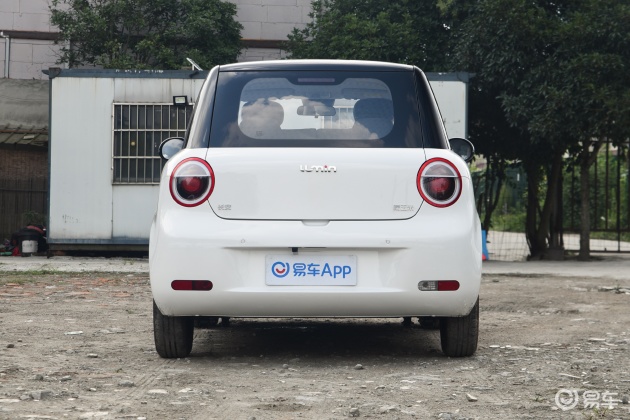
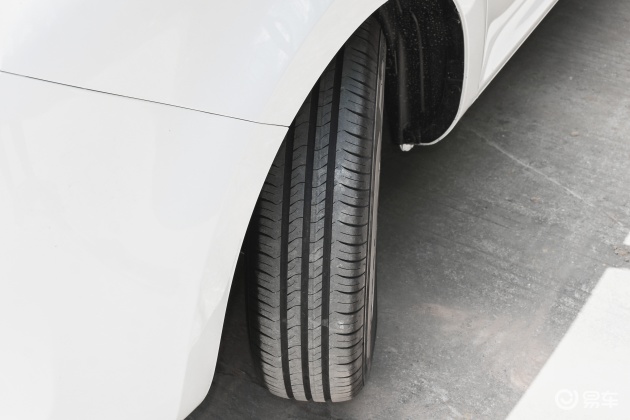
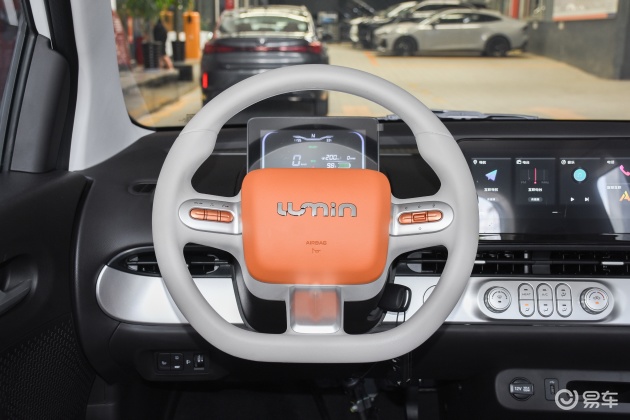
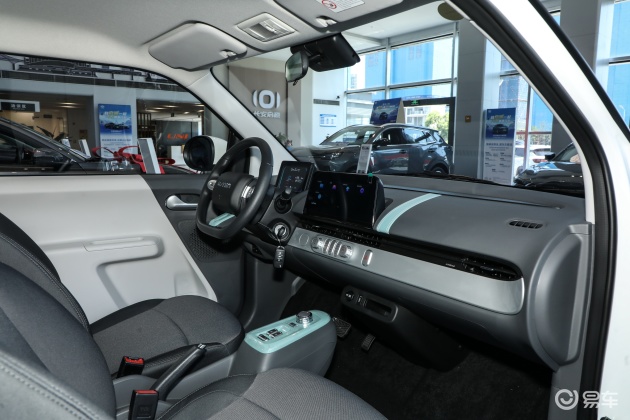
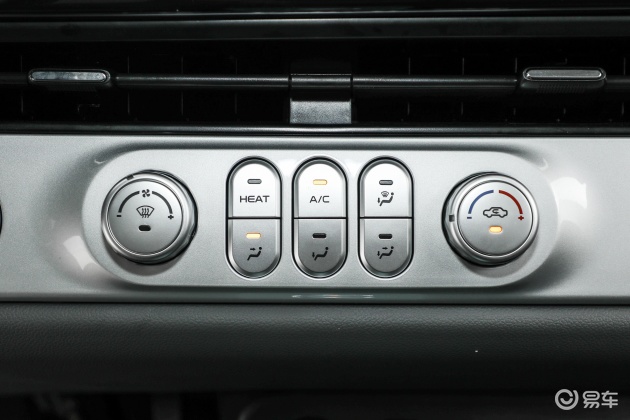
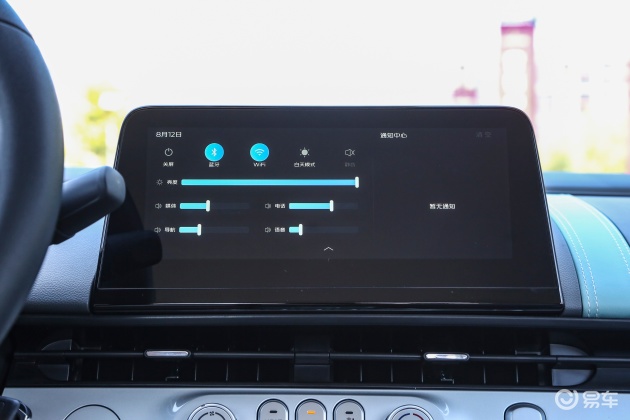
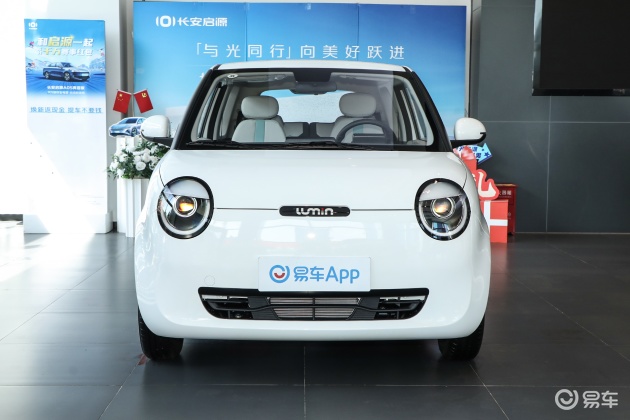
![(Chart) [Authorized to issue] the white paper "Sustainable Development of Traffic in China" (Figure 1)](https://p1.img.cctvpic.com//photoworkspace/imageLocalized/2020/12/22/2020122217421526062.jpg)
![(Chart) [Authorized to publish] White Paper on Sustainable Development of China Transportation (Column 1)](https://p5.img.cctvpic.com//photoworkspace/imageLocalized/2020/12/22/2020122217421516811.jpg)
![(Chart) [Authorized to issue] the white paper "Sustainable Development of Traffic in China" (Figure 2)](https://p5.img.cctvpic.com//photoworkspace/imageLocalized/2020/12/22/2020122217421570241.jpg)
![(Chart) [Authorized to publish] White Paper on Sustainable Development of China Transportation (Box 2)](https://p2.img.cctvpic.com//photoworkspace/imageLocalized/2020/12/22/2020122217421581725.jpg)
![(Chart) [Authorized to issue] the white paper "Sustainable Development of Traffic in China" (Figure 3).](https://p4.img.cctvpic.com//photoworkspace/imageLocalized/2020/12/22/2020122217421555548.jpg)
![(Chart) [Authorized to issue] the white paper "Sustainable Development of Traffic in China" (Figure 4).](https://p1.img.cctvpic.com//photoworkspace/imageLocalized/2020/12/22/2020122217421521687.jpg)
![(Chart) [Authorized to issue] White Paper on Sustainable Development of China Transportation (Column 3)](https://p3.img.cctvpic.com//photoworkspace/imageLocalized/2020/12/22/2020122217421588620.jpg)
![(Chart) [Authorized to publish] White Paper on Sustainable Development of China Transportation (Column 4)](https://p1.img.cctvpic.com//photoworkspace/imageLocalized/2020/12/22/2020122217421563915.jpg)
![(Chart) [Authorized to issue] White Paper on the Sustainable Development of Traffic in China (Box 5)](https://p1.img.cctvpic.com//photoworkspace/imageLocalized/2020/12/22/2020122217421566100.jpg)
![(Chart) [Authorized to issue] White Paper on the Sustainable Development of Traffic in China (Box 6)](https://p2.img.cctvpic.com//photoworkspace/imageLocalized/2020/12/22/2020122217421551124.jpg)
![(Chart) [Authorized to publish] White Paper on Sustainable Development of China Transportation (Column 7)](https://p3.img.cctvpic.com//photoworkspace/imageLocalized/2020/12/22/2020122217421575298.jpg)
![(Chart) [Authorized to issue] White Paper on the Sustainable Development of Traffic in China (Box 8)](https://p3.img.cctvpic.com//photoworkspace/imageLocalized/2020/12/22/2020122217421574045.jpg)
![(Chart) [Authorized to issue] White Paper on the Sustainable Development of Traffic in China (Box 9)](https://p4.img.cctvpic.com//photoworkspace/imageLocalized/2020/12/22/2020122217421576953.jpg)
![(Chart) [Authorized to issue] White Paper on Sustainable Development of China Transportation (Box 10)](https://p3.img.cctvpic.com//photoworkspace/imageLocalized/2020/12/22/2020122217421533860.jpg)

